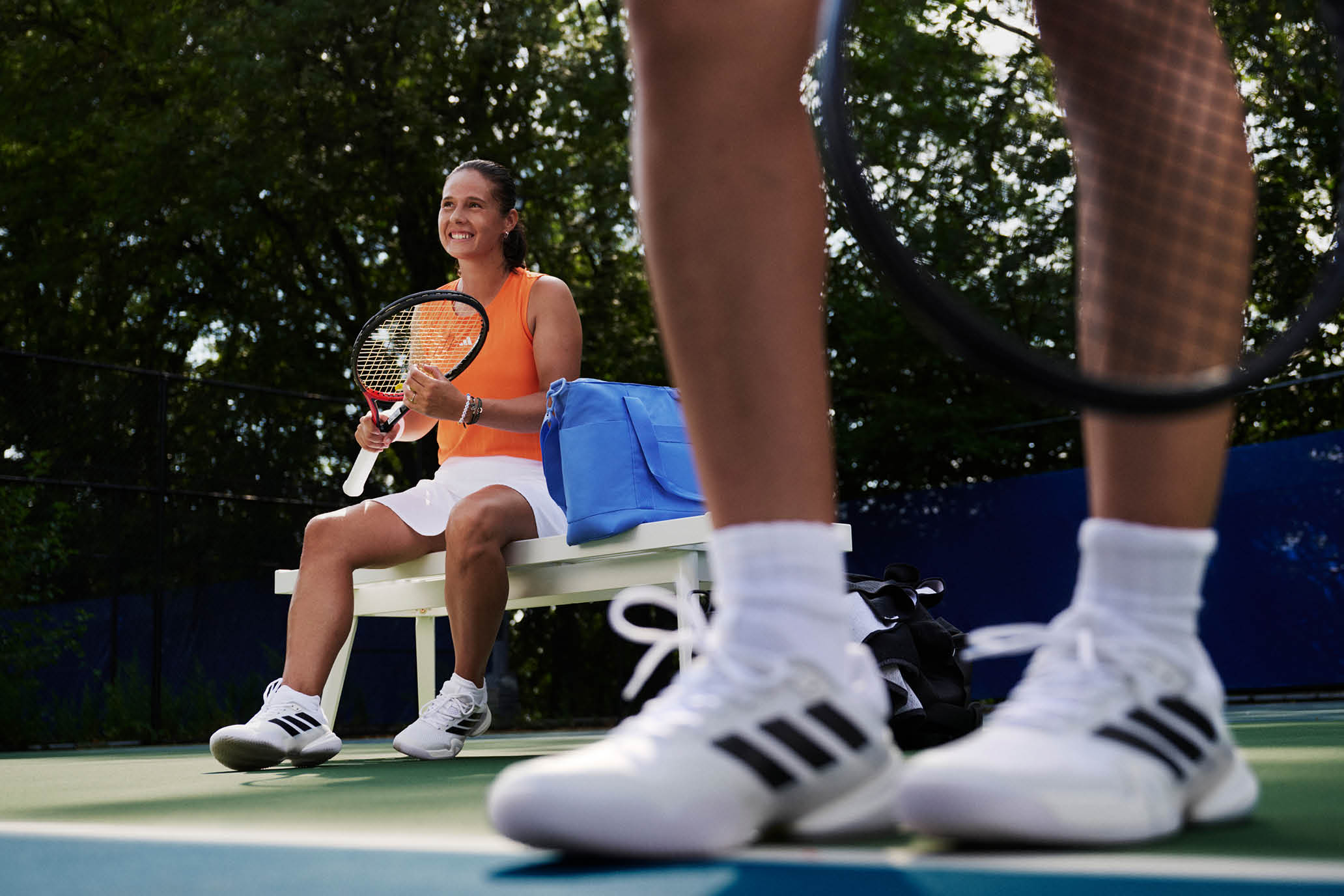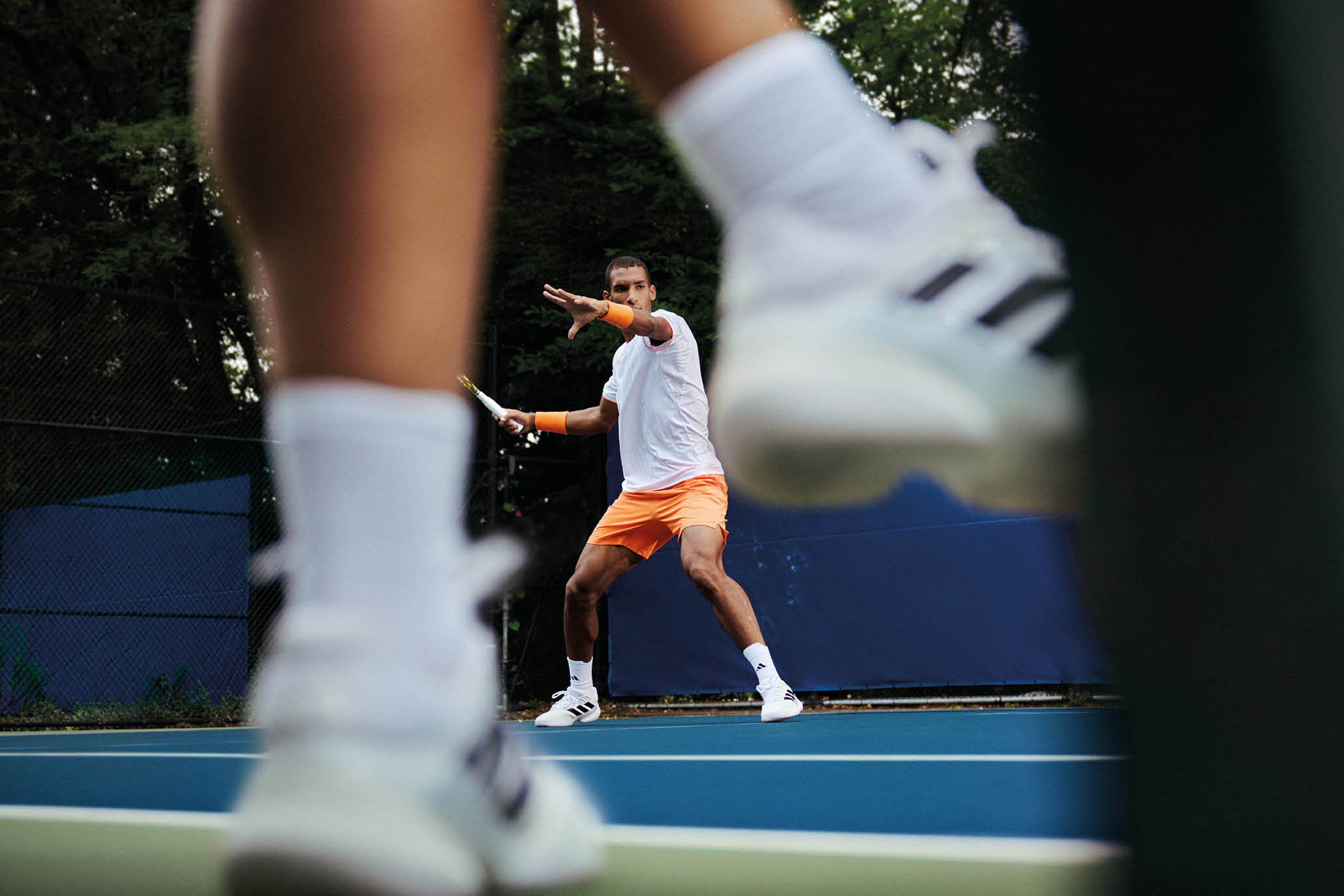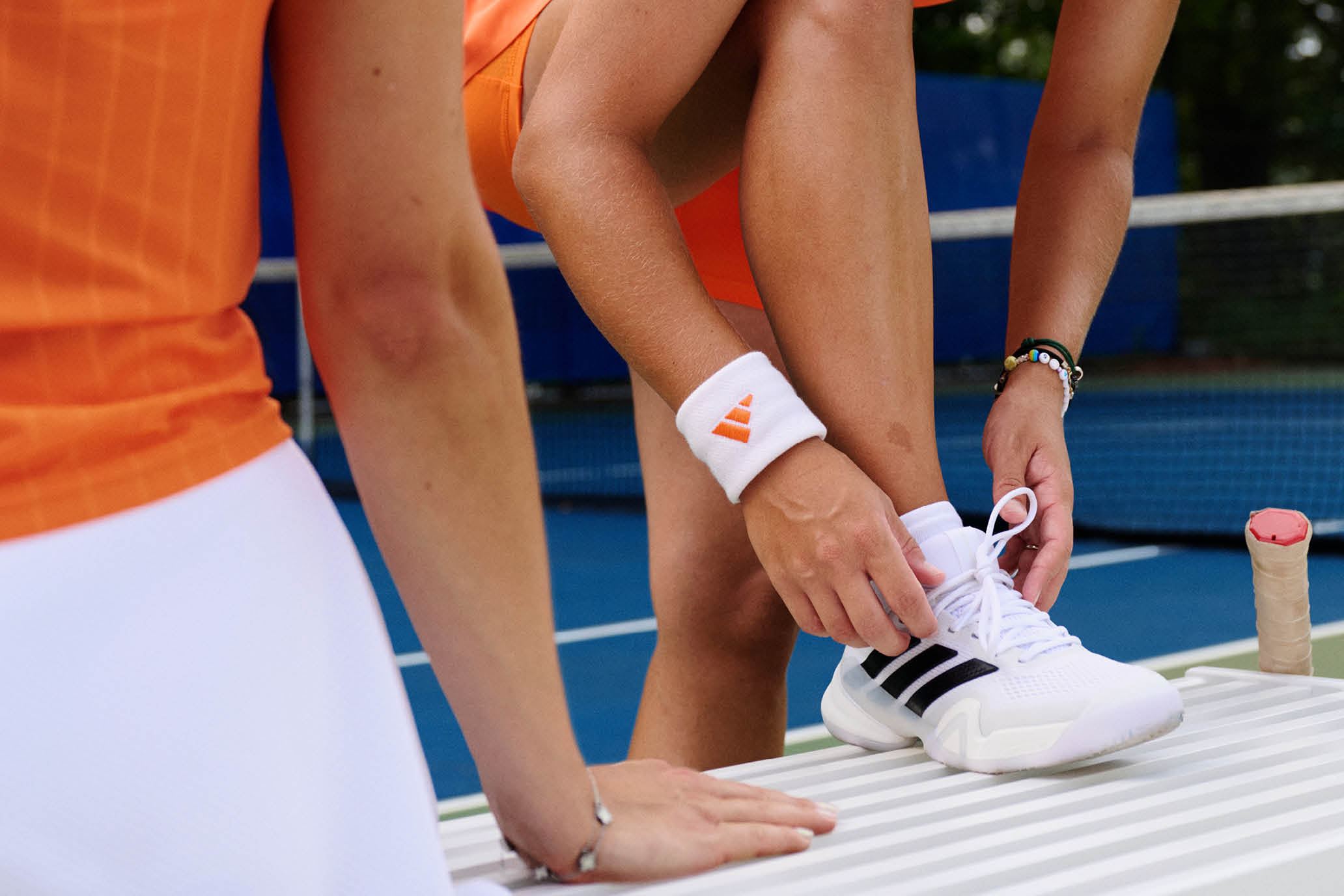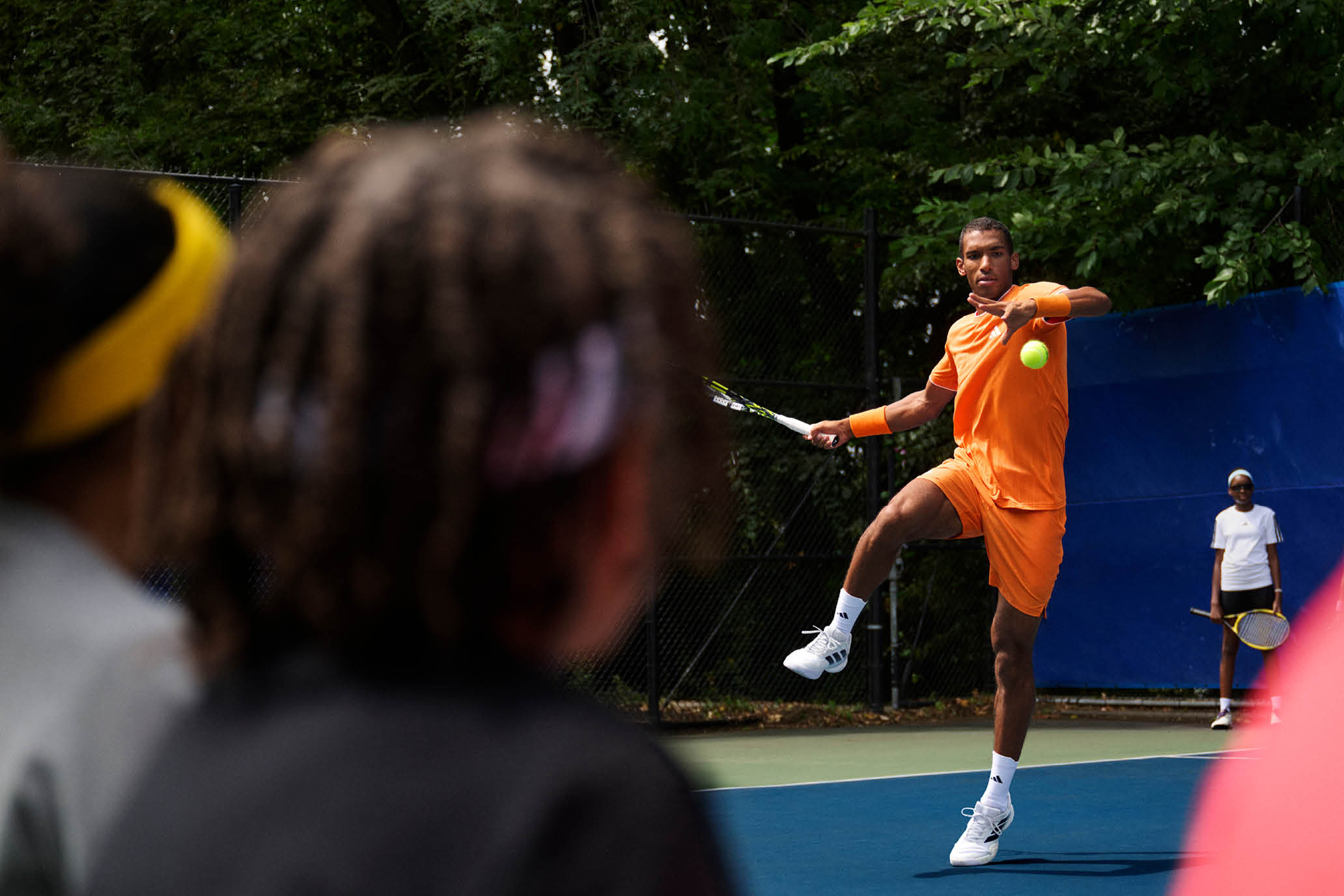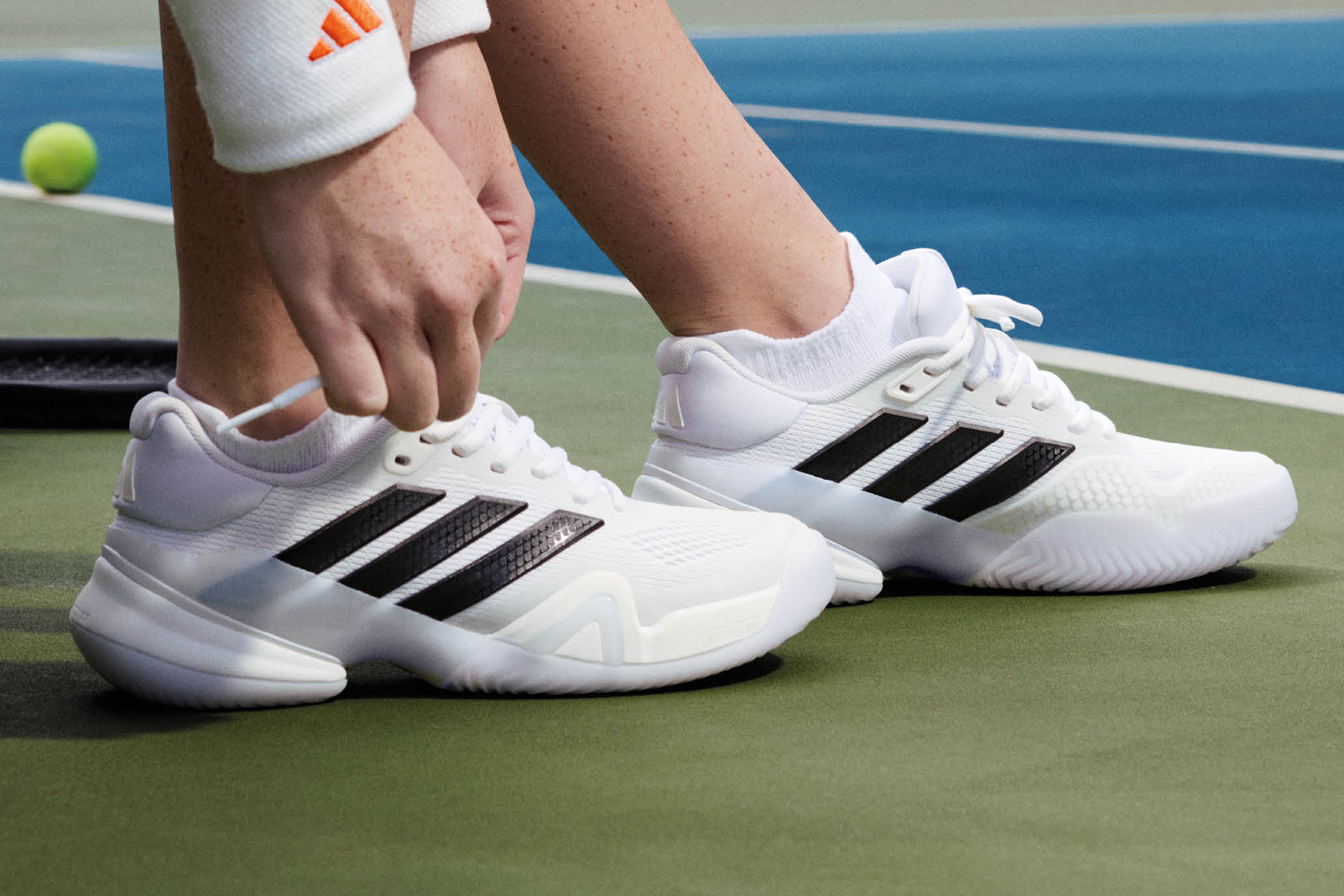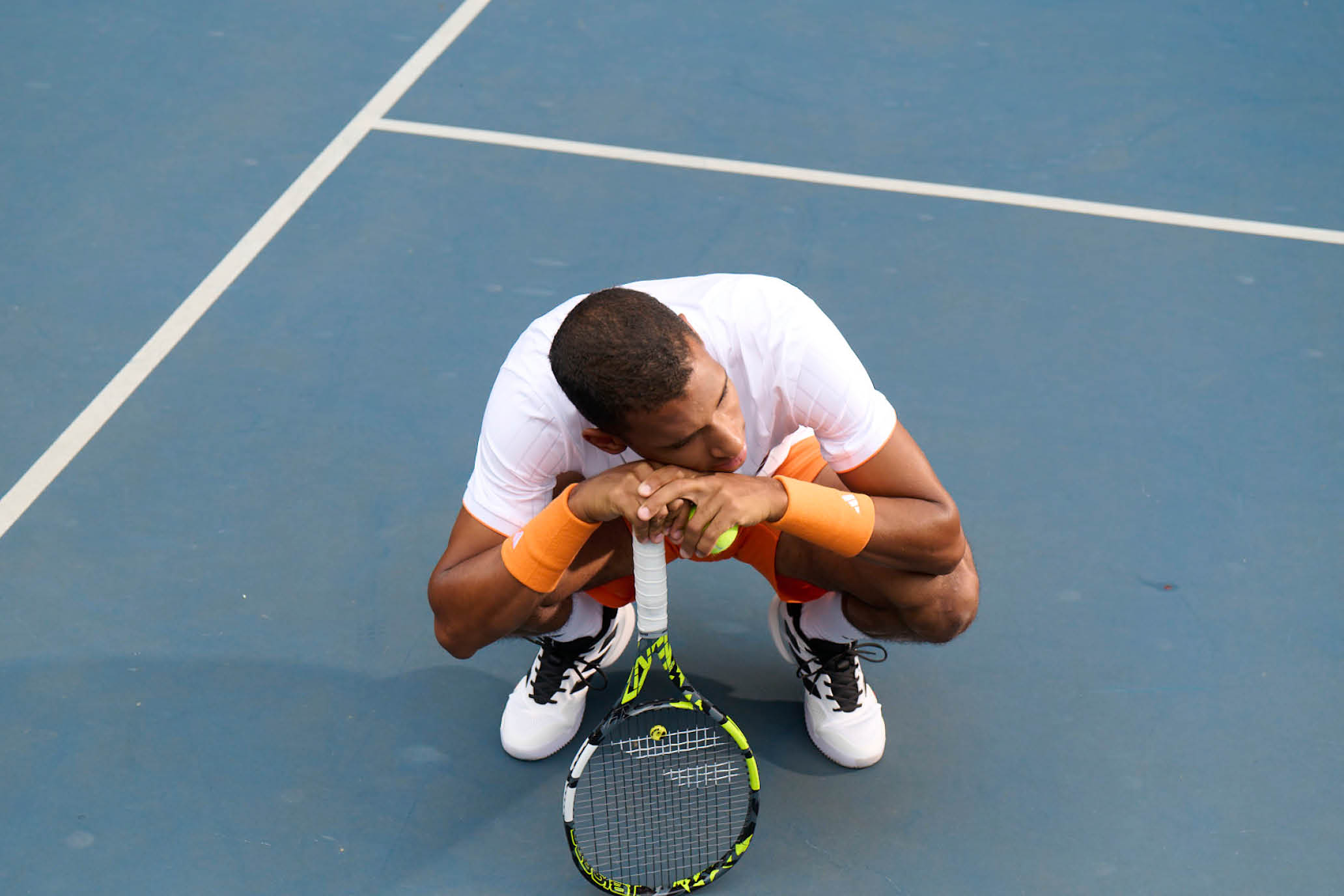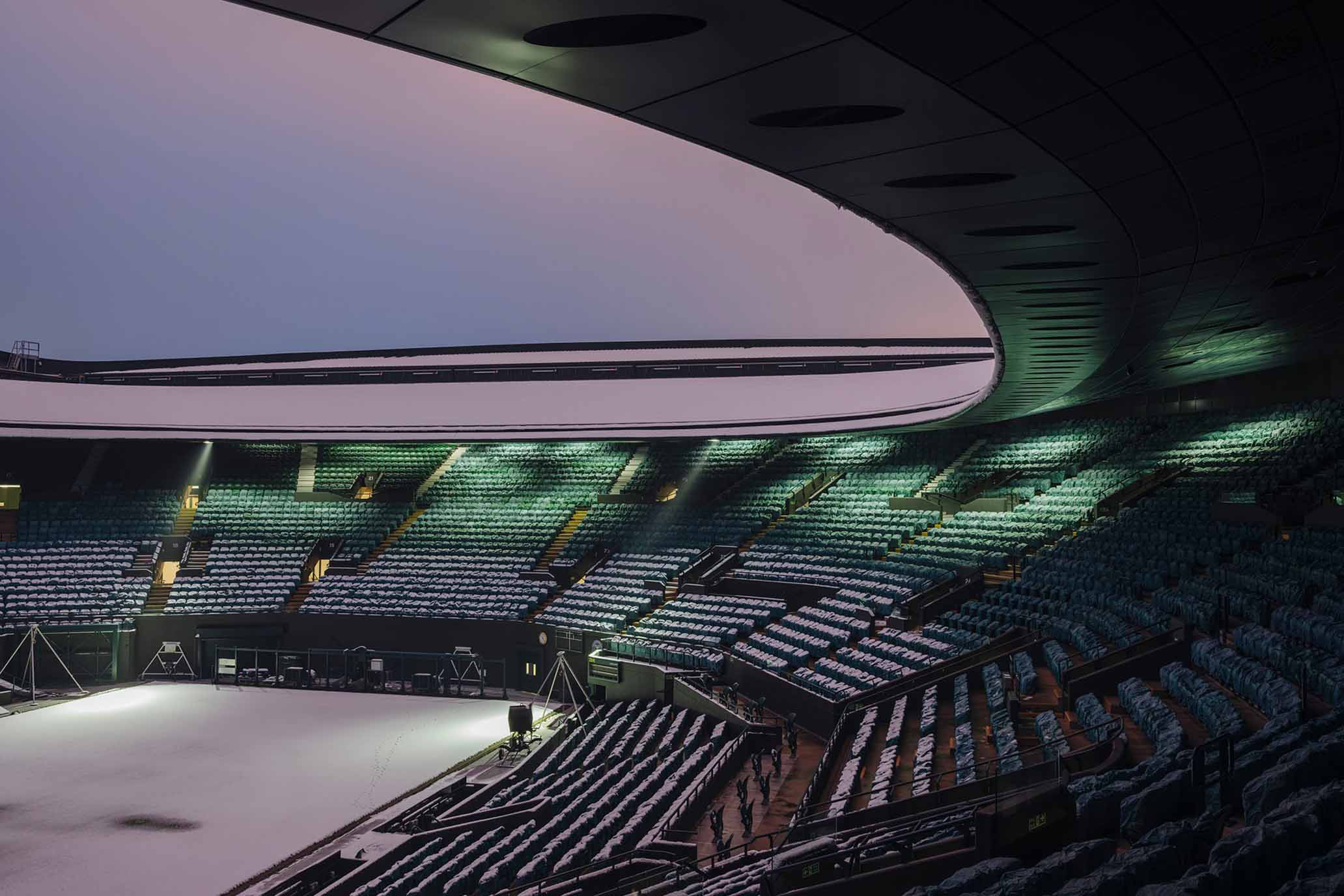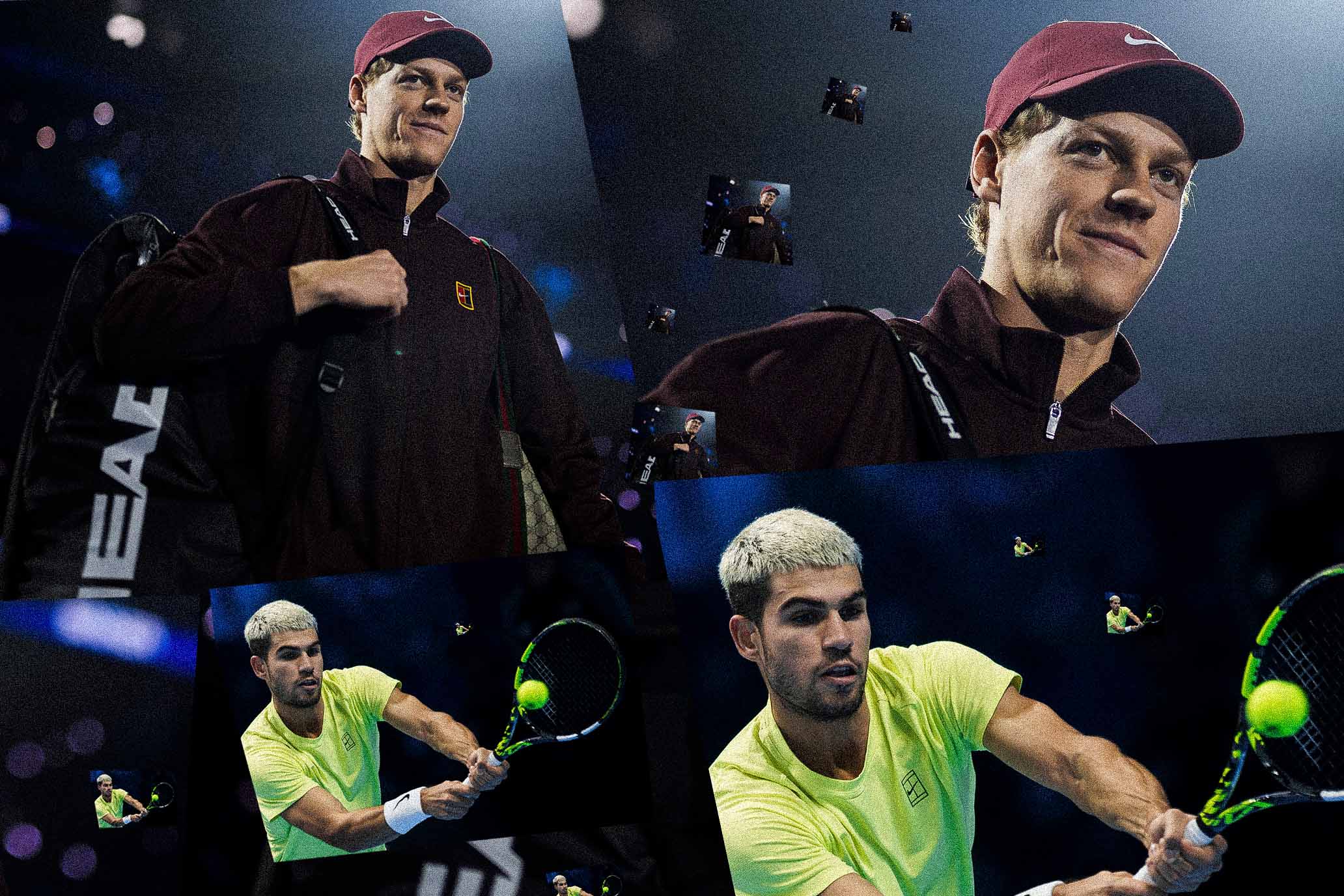Big House Boris
Big House Boris
Big House Boris
Book Review: Inside: Winning, Losing and Starting Again
Book Review: Inside: Winning, Losing and Starting Again
By Patrick J. Sauer
Dec 18, 2025
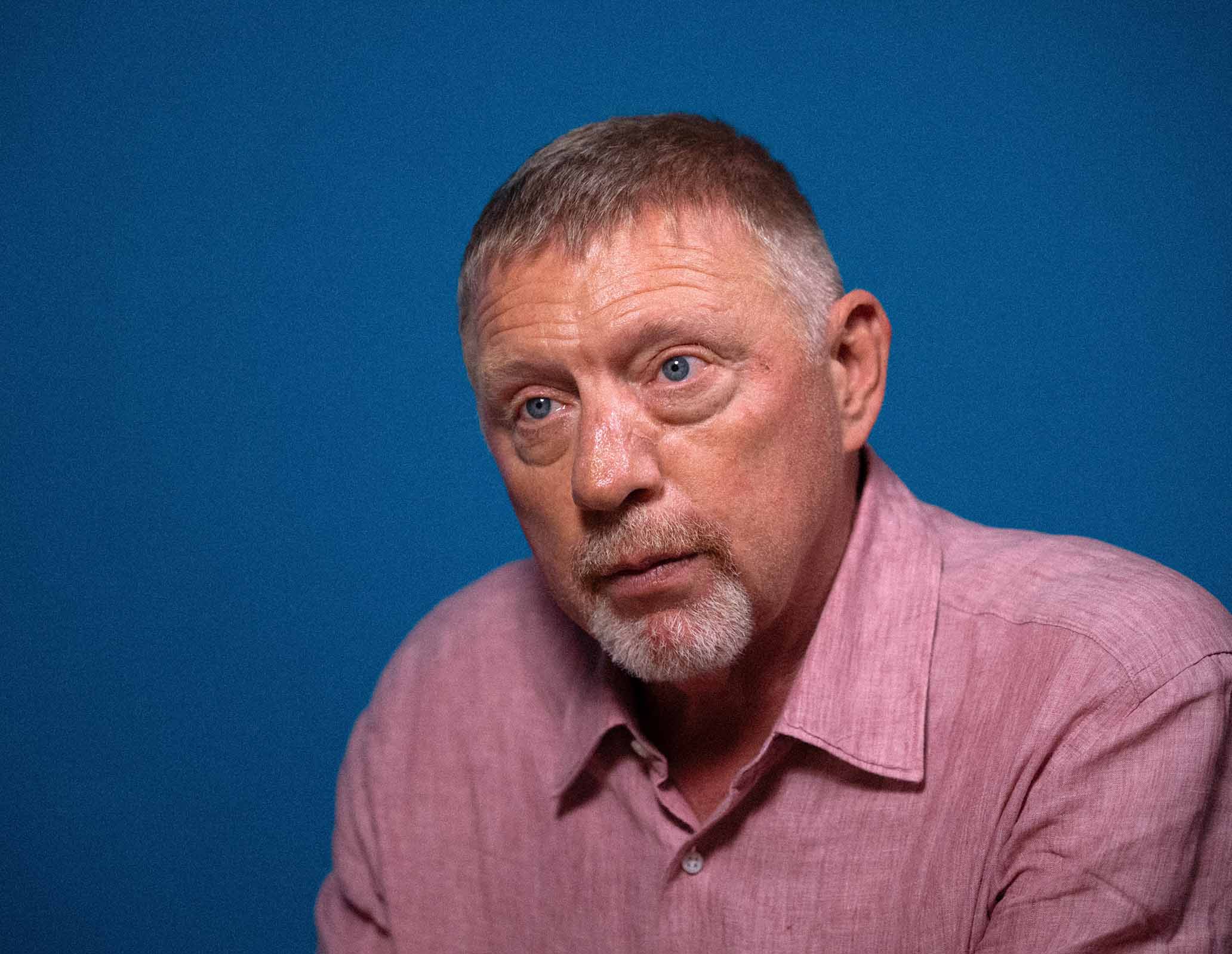
Boris the writer. // Getty

Boris the writer. // Getty. // Getty
Consider for a moment, if you will, being Boris Becker on April 29, 2022. Historically, you are the Wimbledon Wunderkind, a member of the Tennis Hall of Fame who won six Grand Slams, 49 singles titles, an Olympic gold, and $25 million in prize money alone. Yet here you are at Wandsworth, Her Majesty’s Victorian-era prison, with a rubber-gloved guard touching and examining, as you describe, “Balls, penis, rectum. You almost laugh. Not quite, but almost. What exactly are you looking for?”
Inmate A2923EV would spend the next eight months inside two British penitentiaries. He tells the somewhat harrowing tale of his incarceration in a new memoir, Inside: Winning, Losing and Starting Again. Released in the U.K. in September, it can be found through online booksellers for the Boris Franz Becker completists on your Christmas list.
Becker’s misdeeds are convoluted and uninteresting, dumb rich-guy shit that can be traced back to his dumb rich-guy plan to sell a luxury estate in Mallorca for a vastly inflated price. It led to him declaring bankruptcy in London in 2017 and, five years later, a conviction for the financial malfeasance of hiding assets from creditors and trustees.
It’s unclear whether Becker knew specifically what was going on—at various times in Inside he comes across as both dupe and dope—but the conviction itself is interesting because it’s the ultimate self-own. Judge Deborah Taylor made it clear that a “significant aggravating factor” as to why she dropped the Boom-Boom on his head was because he skated on doing time for a previous 2002 German tax evasion conviction. She twisted the knife into Becker’s boundless ego, adding, “While I accept your humiliation as part of the proceedings, there has been no humility.”
So this is how a former No. 1-ranked player in the world ends up with some nonplussed prison guard rummaging around his undercarriage. It’s one of many killer anecdotes Becker spills in the intriguing, enlightening, and entertaining 200-page book. Too bad it’s trapped inside the tedious 338-page book that was actually published.
There are so many repetitive pontifications on both obvious things about prison life we know from movies—the food sucks; it’s boring, unless there’s fighting; playing chess kills time—and from the self-help-y pop psychology of what it all means, one wonders if Becker got paid by the word.
There are two other Inside editorial oddities that pad the book out while adding little of value. The first is the inexcusable decision to include chapter-beginning letters from Becker supporters. Here are three lines, plucked from three randos, that I would say are taken out of context, except there was no context in the first place:
“I found an interesting book called The Leopard by Giuseppe Tomasi di Lampedusa. He is famous for saying, ‘If we want things to stay as they are, things will have to change!’”
“I have a nine-year-old pug called Boris named after you, not the Prime Minister.”
“I’ve got nothing to say really, I just want to say hello and hopefully make you smile.”
Let’s hope Becker did smile, and that the notes lifted his spirits, because they drag the prose down. As do the “Cell Dreams,” which are haphazardly placed throughout the book but, apologies for the pedanticism, should be called “Things I Happen to Remember Remembering While in Prison.” The passages aren’t dreams; they’re specific moments from his past. All the way to the granular level of Becker, as a 17-year-old in 1985, recalling a ham-and-cheese sandwich he ate before going out and beating Kevin Curren in four sets for his first Wimbledon title.
Some of these non–dream sequences are intriguing, like his utter jealousy when the hot new young “golden boy” Andre Agassi came on the scene, which might have added to his isolation had it been woven into his day-to-day life behind bars. Instead, these interludes are presented on the page as italicized set-aparts and end up becoming a distraction. (Also, discussing mental hang-ups around Agassi is a stark reminder that Inside ain’t Open.)
It’s unfortunate that the book has all this unnecessary obfuscation, because when Becker focuses on what his actual prison experience was, it’s fantastic stuff. It’s wild, at least by American jurisprudence standards, that a white-collar criminal even went to prison, let alone a nightmarish Dickensian-age stone-walled one that formerly housed “Ronnie Biggs, the Krays and Gary Glitter, Pete Doherty and Oscar Wilde.” It’s inspiring that within Wandsworth there’s an earned position, a “Listener,” for experienced, respected prisoners who “serve as link between inmates and wardens,” “your local guides” and “your guardian angel in tattoo sleeves.”
His time in prison isn’t hard compared with, say, the pedophile who gets beaten senseless by Becker’s workout buddy Baby Hulk, but it’s no country-club joke, either. At his second prison, HMP Huntercombe—an upgrade, but only by the lowest of “British prison” standards—Becker learns how to maintain his sanity in unexpected ways, including an intensive monthlong stoicism class he aces and takes to heart. This leads to a jailhouse meeting between Becker and former tennis rival Pat Cash, a fellow practitioner of the stoic arts and a member of the Aurelius Foundation, the group of ancient-Greek followers who run the prison course.
Many of the Inside details are mind-boggling in the best kind of way (especially considering a 2022 Forbes story reported Becker’s peak fortune as $150 million), like when Becker stopped hanging around an inmate named Giovanni after learning his fellow financial fraudster had been close to Serbian president Slobodan Milosevic and a business partner of the notorious war criminal Arkan.
Inside gets better and better as Becker’s sentence goes along. He begins opening up about how close he got to his prison pals, all of whom, like Becker, ended up back in their home country because extradition shortened sentences. I started narrating them sitting around a London pub in the Henry Hill Goodfellas voice: “There was Shuggy from Sri Lanka, Paulo from Naples—his pasta and sauce was better than the finest hotel—and Baby Hulk from Lithuania, he’s training to be a UFC fighter now, and then there was my best friend and mentor Andy Two Times, I called him that because he preached everything twice like ‘Boris, you should read the Stoics, read the Stoics…’”
There are a couple of truly affecting scenes near the end of Inside, both centered on Becker’s birthday. One in Huntercombe involves multiple cakes, the other comes on the outside, in Germany, with a beautiful surprise that had me a bit teary-eyed in that holiday-with-loved-ones way.
Becker is a flawed man, and it’s a flawed book, but by the end of Inside, he seems humbled. He’s 58, but as Charles Dickens showed us, come this time of year, when the air blows cold like it did through his prison cell window, a man is never too old to change. I’ll be rooting for Boris Becker to honor Christmas in his heart, to keep it all the year, and to hire a ruthless editor for Ghosts of Paperbacks Yet to Come.

PURE, ORIGINAL TENNIS — SIGN UP!
Are We Having Fun Yet?
Oh, Joy.
Oh, Joy.
From OPEN Tennis Vol. 2: Is Tennis Fun?
From OPEN Tennis Vol. 2: Is Tennis Fun?
By Brittani Sonnenberg

Not pictured: the author of this piece. // Getty
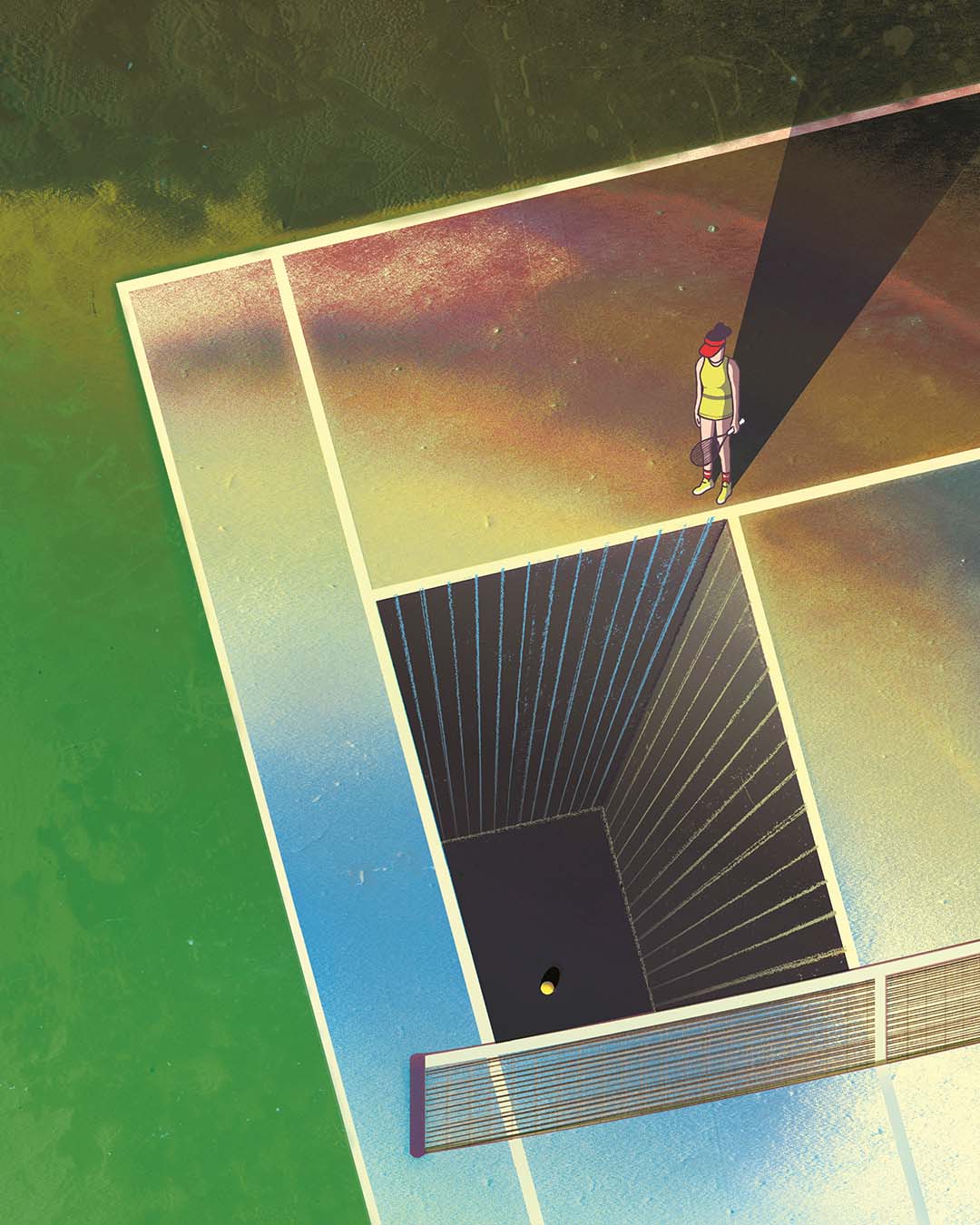
Illustration by Dalbert B Vilarino.
I kept my cool walking past courts 4, 5, and 6; then the infuriating water fountain, whose measly burble is like a woman talking to herself; then the KEEP OFF GRASS sign, which Alejandro and I ignored, like everyone else, taking the well-trod shortcut to our car. Doors closed, I fixed a stony gaze out the front window. At the stoplight, the tears began to leak out, and by the time we got on I-35, I was messy-crying.
It wasn’t that my husband had beaten me, again, in our Tuesday singles match, although the 0–6 first set rankled. I usually get at least one game off of him, four on my best days. There had been a close baseline call, and then a blatant ace theft, after which I summoned my inner Ostapenko and glared at him while slamming winners right and left. Or, more truthfully, straight into the net.
My odds were not good going into the match. I was about 1–350 in our four-year head-to-head. As I told tennis friends, who raised their eyebrows and said they would never play against their spouse, playing against a 4.0 dude made me better in my 3.5 women’s matches. But as Ale squeezed my knee in the car, an admittedly kind gesture that just felt really fucking condescending, I thought: I hate this.
*****
Is tennis fun? If you play tennis regularly, your answer is probably yes. The Oxford Dictionary defines fun as “enjoyment, amusement, or lighthearted pleasure.” Would you call your matches a “lighthearted pleasure”? Doesn’t that sound more like pickleball players, and isn’t that why we make fun of them? When is the last time you left a court thinking: That was delightful! Admit it, if you won, your satisfaction was bloodier than mere “enjoyment.” If you lost, you were probably attacking yourself, as I was on the car ride home, for taking it too seriously. For not having fun. For being so infantile.
*****
Speaking of babies, my 15-month-old, who just learned how to walk, looks a lot like me on the court. She’s elated, and then she’s furious. Ona looks astonished when she falls, even though this is what happens every time she takes a few steps. Everyone praises the toddler can-do attitude for getting up again and not letting it affect their sense of self-worth. But if her vocabulary extended beyond “banana,” “woof,” and “uh-oh,” I think she’d tell you that she loves the forward-flying miracle of walking but hates how quickly it abandons her, the same way I feel about my forehand approaches. The difference, I guess, is that she doesn’t retreat into a corner of the playroom to think about how she can walk more “loosely” next time. Walking is thrilling, and walking is the worst, like most things in Ona’s life, except for mashed potatoes, which are perfect.
*****
David Foster Wallace famously called luxury cruises a “supposedly fun thing” he would never do again. I know this because I remembered the title and the essay’s subject, but in truth, I have never read the actual essay because it didn’t seem fun enough. I’ve read his tennis essays, of which I recall that the wind didn’t bother him because he grew up in North Dakota, and that he was kind of hard on Tracy Austin. I’m not going to go back and reread them now to glean where he lands on fun in tennis, because that would not be fun. But the reason that essay title stuck in my head is that it’s so damn good; so much of what we do as adults is “supposedly fun” but ultimately too draining to repeat.
Tennis, however, is a supposedly fun thing that we do again and again and again, which brings it into the realm of addiction. (Get ready for another fun definition!) “Addiction: a compulsive, chronic, physiological, or psychological need for a habit-forming substance, behavior, or activity having harmful physical, psychological, or social effects.” Am I grumpier when I play tennis or when I abstain? This week, I am limiting my tennis to three days to heal a wrist injury (see: addiction’s “harmful physical effects”), but I know I’ll be moodier on the days that I don’t play. Like David Foster Wallace, I have a depressive streak, and I imagine this is true for a lot of athletes who choose tennis, especially singles players. It’s the lonely overthinker’s sport. But in the moments when the physical and mental challenges are eclipsed, you are freed from your Eeyore, and part of the joy comes from how hard it was to shed yourself.
That said, I most consistently enjoy tennis in my other weekly meeting with a better male player: my coach Tom. But in these lessons, of course, I am literally set up for success. His encouragement replaces the sarcastic, cutting voice in my head. But do private lessons count as real tennis? Aren’t they just pre-tennis, like clinics or choosing cool shoes? There’s a Velveteen Rabbit dilemma to “club-player tennis”: You aspire to veracity, but as Conor Casey’s satirical Instagram videos so gleefully skewer such wannabes (us), the gap between our own seriousness and the actual stakes is laughable.
*****
I spent half of my childhood in Shanghai and Singapore in the late ’90s and loved watching martial arts, ballroom dancing, and calligraphy painting in the parks. (Alongside more esoteric activities like tree slapping, which turned out to be a martial-arts drill.) Practitioners, largely retirees, were often more enthusiastic than notably skilled, although you could always spot a few whose liquid movements revealed mastery. Recently, researching traditional Chinese medicine for a novel, I came across the Taoist concept of “yangsheng” (养生), whose literal translation means “life nurturing,” but which serves as an umbrella term for all kinds of amateur pursuits (from disco dancing to kite flying to walking backwards) and health practices (regimens around eating, drinking, sleeping, etc.). “Yangsheng should lead to greater vigor and alertness; it should prevent common diseases such as colds and rheumatism; it should above all make you happy,” write Judith Farquhar and Qicheng Zhang in Ten Thousand Things: Nurturing Life in Contemporary Beijing. In their ethnography, Farquhar and Zhang report that an important aspect of yangsheng groups is that “participation is optional and…has nothing to do with a sense of duty.”
Is tennis 养生? My first tennis coach often told me I needed to “take it down to 70 percent” in order to play my best. If there is a sweet spot on the racquet’s strings, is there a sweet spot in our brains, where we are deliciously driven but not depressed?
Alejandro and I are scheduled to play in six hours. Irrationally, I am looking forward to it, although I know that losing to him will make me livid. Still, there is the belief that one day I’ll win. And before then, the little moments of triumph—passing him down the line, acing him up the T—are victory enough. That juicy compulsion to beat a tough opponent might be fun’s weird cousin; they’re related, but you can only see the resemblance if you squint. The biggest challenge when facing your biggest challenges is not figuring out how to win, but how to keep fun around, instead of assuming you can’t afford to enjoy yourself in the big moments. Inviting that lightness and trusting it. Tennis is fun until it isn’t, but luckily, like a tennis fan who made a bad decision about when to grab food at a Grand Slam, fun always wants to be let back in.

PURE, ORIGINAL TENNIS — SIGN UP!
New Again: Adidas's Barricade Gets An Update
New Again: Adidas's Barricade Gets An Update
New Again: Adidas's Barricade Gets An Update
By Tim Newcomb
Dec 11, 2025
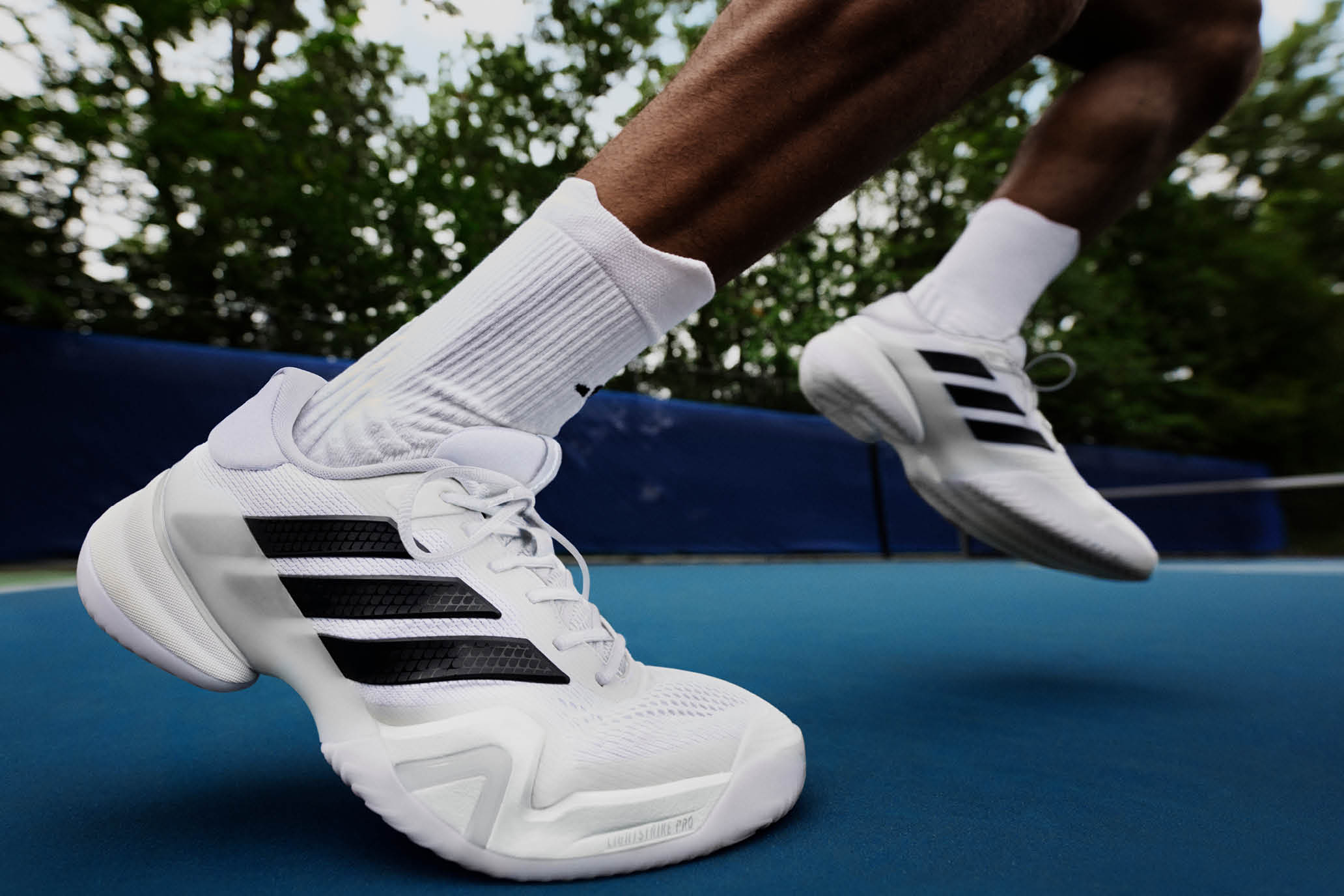
Image courtesy of Adidas
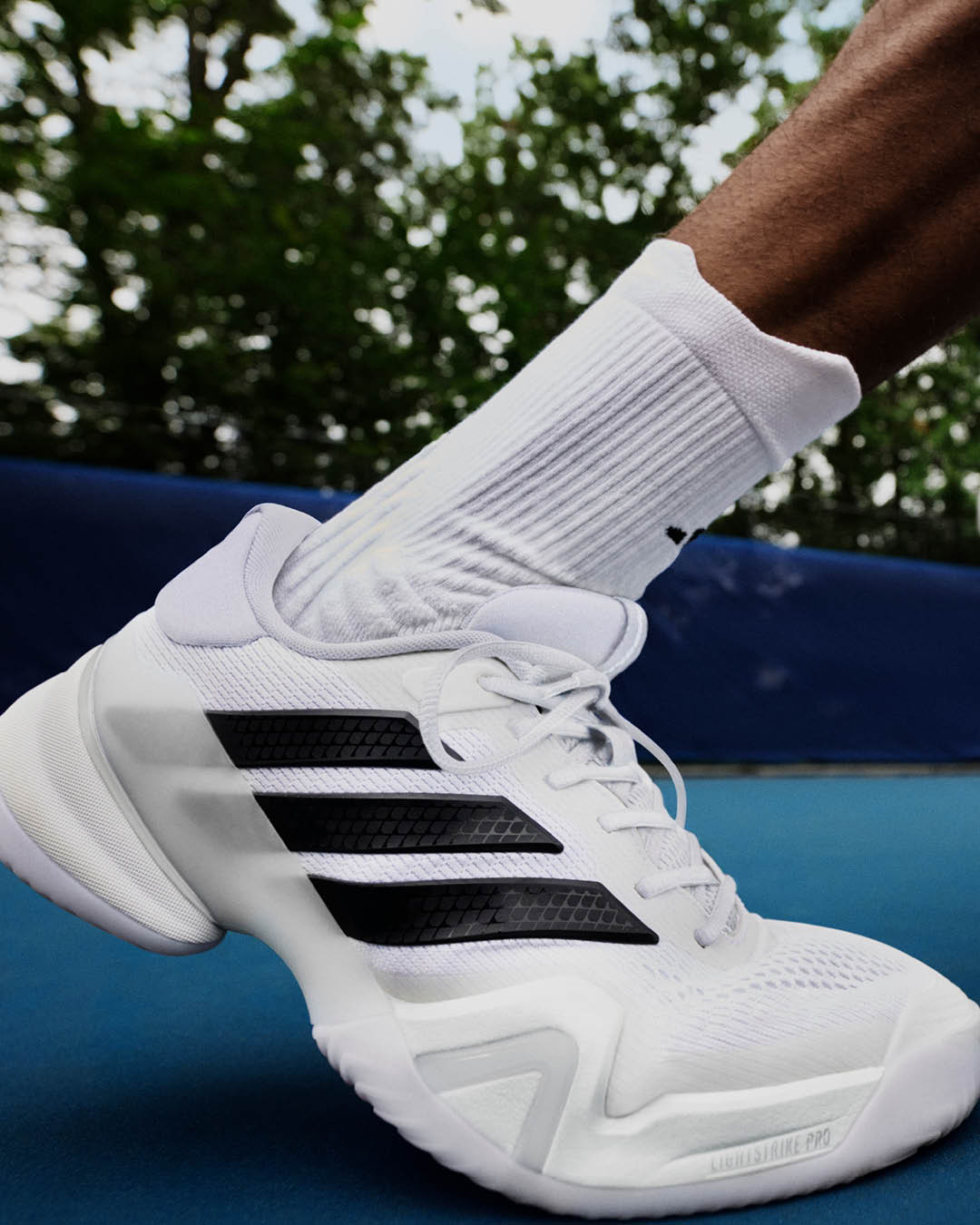
Images courtesy of Adidas
The adidas Barricade is the longest-running performance tennis silhouette in the sport for a reason: its durability and playability. Some iterations have felt a bit stiff and heavy, though, so the fresh approach the German brand has brought to the latest iteration is exciting, to say the least. The new Barricade 14 comes with an entirely updated last, a fresh approach to foam, and additional comfort-focused points throughout, giving the shoe (which released in early December) a new, more maneuverable feel 25 years after its initial release.
Annette Steingass, a senior director at adidas, tells me that feedback on the Barricade revealed that they needed to “elevate the fit and feel of the model,” all while keeping the legendary stability the shoe franchise has become known for. “The main focus was to improve the immediate comfort from first wear and provide an overall more agile and dynamic shoe that meets the needs of the increased physicality and speed of tennis,” she says.
It all comes with a completely new last—or mold used to make the shoe—updating the fit of the new Barricade. Adidas then brought in its Lightstrike Pro foam in the forefoot, meant to improve energy return, while keeping the Repetitor foam in the heel for shock absorption. “It’s essentially to support the demands of the modern game,” Steingass says about the foams, “and provide a snappier response off that key part of the [fore]foot.”
Adidas added touches of comfort, from cushioning in the tongue to a cushioned collar, and introduced a new outsole construction borrowed from the brand’s running shoes. A new “chassis claw” construction is meant to retain the stability the line has featured, even with the updates. So far, adidas has launched the $170 sneaker in a black-on-white design. Let’s hope more colors are forthcoming.
Follow Tim Newcomb’s tennis gear coverage on Instagram at Felt Alley Tennis.
SIGN UP — YOU'RE ONLY AS GOOD AS YOUR SECOND SERVE.
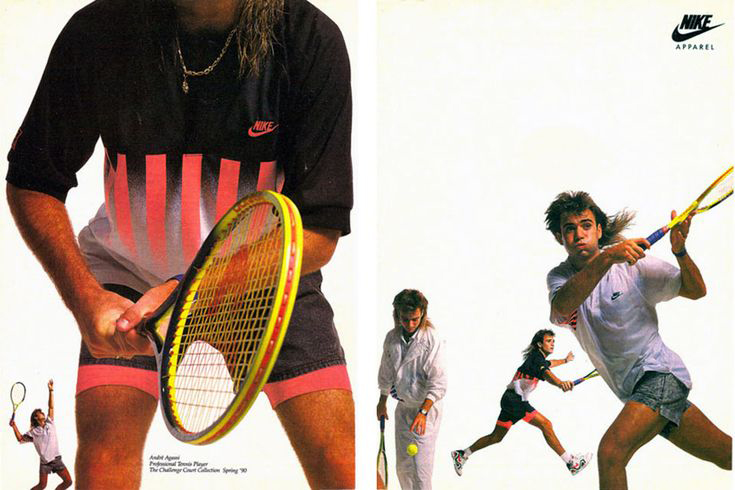
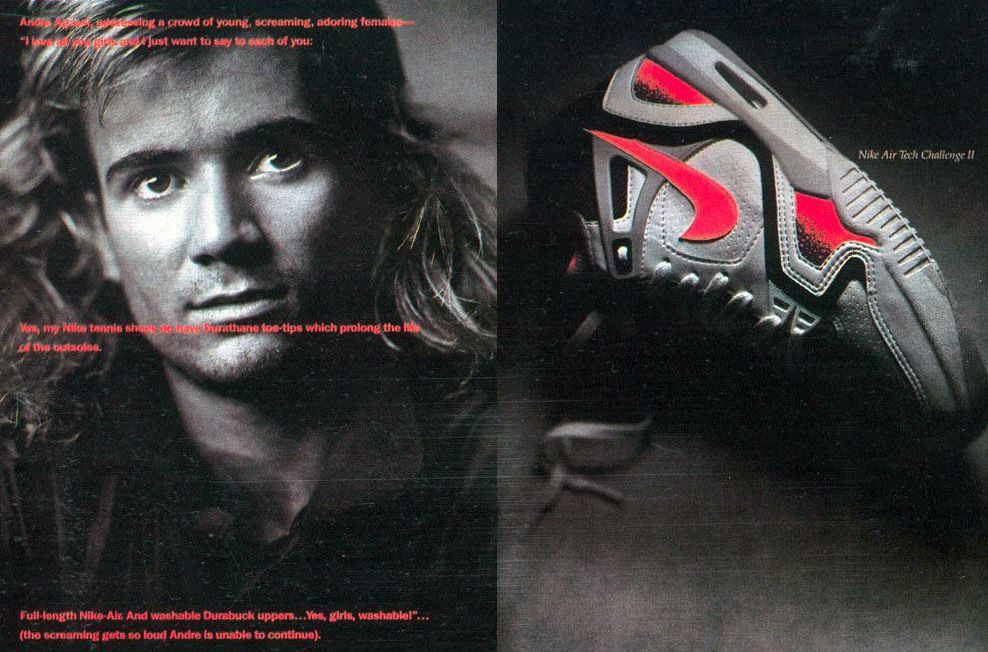
SIGN UP — YOU'RE ONLY AS GOOD AS YOUR SECOND SERVE.
Withdrawal Season
Withdrawal Season
Withdrawal Season
Our tennis-starved correspondent is suffering.
Our tennis-starved correspondent is suffering.
By Owen Lewis
Dec. 4, 2025
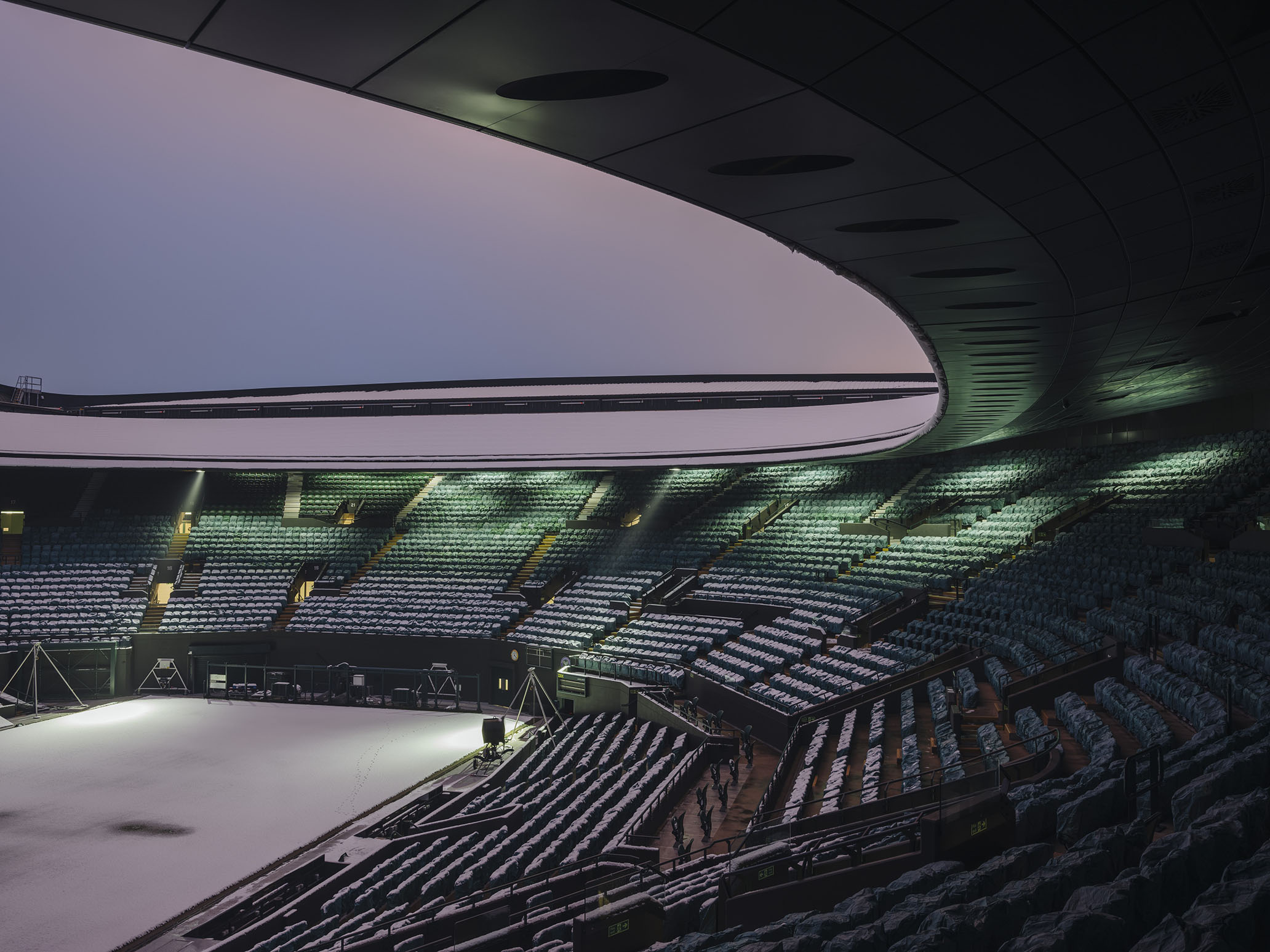
Centre Court, Wimbledon, under a cloak of snow. // Tom Parker
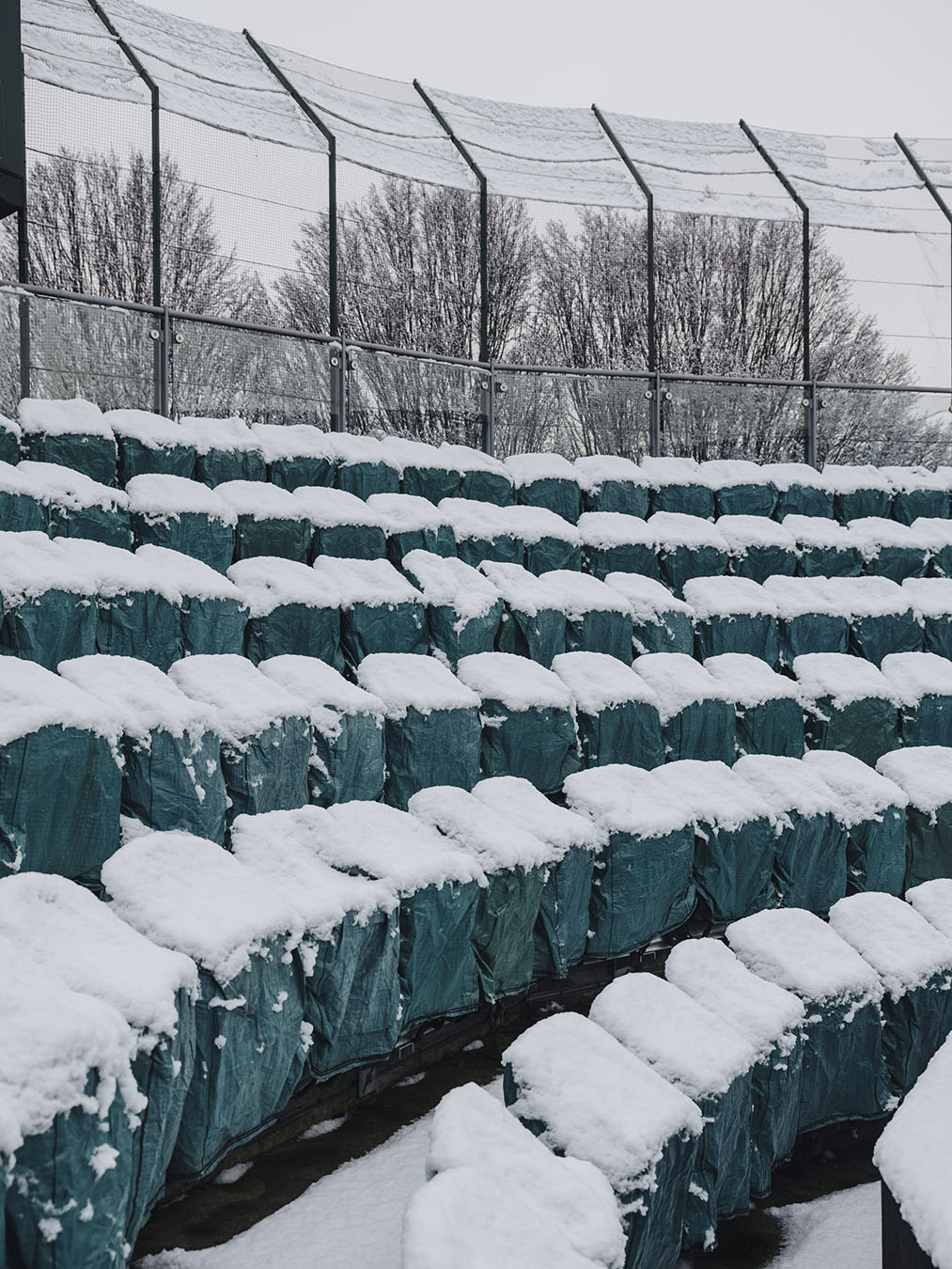
Centre Court, Wimbledon, under a cloak of snow. // Tom Parker
There’s a moment near the end of John L. Parker’s classic novel Once a Runner that’s more poignant than the climactic four minutes of running that precede it. Protagonist Quenton Cassidy has just finished first in the mile race he aspired to win from book’s beginning, chasing down a far more accomplished rival in the last 100 meters and hammering his body into a “solid block of lactic acid” to do it. Once the pain juice sufficiently dissipates to grant him renewed control of his faculties, Cassidy is aimless. In what should be a triumphant moment, waving to the crowd to acknowledge his unlikely victory, Cassidy thinks, I have nowhere to go.
I’ve been thinking about this moment in the aftermath of an even more testing physical accomplishment in my own life: watching the 2025 tennis season, mostly from the comfort of various beds, sofas, and chairs. I enjoyed this season from first ball to last, even the usually boring ATP Finals. Tennis is compelling to watch for the same reasons as other sports—we can live and die with our favorites, scream at moments of excruciating tension, appreciate an unexpected hero’s journey from a previously unknown player. But its greatest charm, the reason it is so fiercely beloved by those who never watch anything else, is that it runs for damn near 11 months of the year. There is always tennis to watch, some tournament, on some continent, in some time zone. There’s even tennis to watch right now, if you can get past the frustrating lack of stakes in the exhibitions top players tend to pack their offseasons with. Such a reliable source of entertainment fosters relationship and routine: checking scores in the morning from tournaments I’m not even watching, opening the Tennis Channel during dead hours of the day, calling a friend after a particularly electric match. With the season over, I lack an adequate substitute on which to spend my time.
Juan José Vallejo, a writer with a gift of observing the more nuanced reasons why tennis points unfold the way they do, once articulated this particular feeling for me, quoting a friend he used to host a podcast with: “Tennis is the best sport for people with addictive tendencies.”
“And it’s true,” Vallejo said, “because it just offers you a continuous supply of the drug.” Vallejo’s framing made me evaluate the nail-biting habit I’d been unable to kick since I picked it up as a kid, and my pattern of rewatching old shows rather than try new ones, through a different lens.
If tennis is a drug to its diehards, the season is something like withdrawal, and a particularly difficult one for we addicts. Six weeks until the Australian Open begins? This is simply too long. Worse, the offseason experience is usually filled with tasteless mush. Without tennis to watch, our habits of checking social media and headlines remain, but the substance at the other end is lacking. Hark! The tennis Redditor who already replies to every single comment on a given page, while complaining about the community half the time, now seems to be arguing with themself via an alt account. Another player has offered a bland take on a podcast, to be seasoned and dressed up into clickbait. Sincaraz fans are debating “who the real No. 1 is” and likely won’t stop until one guy has a canyon-wide lead in points. Someone declares in the YouTube comments section that Stan Wawrinka was better than Andy Murray, actually. A decorated coach is spending his time posting pointless, provocative YouTube Shorts. The best matches, outfits, sound bites, and performances are relitigated endlessly. A vague stat called “performance ratings” circulates the internet, trying to convince you that a 6–4, 6–4 match in which the loser produced a singular (unconverted) break point was not only close but one of the best tussles of the year. I feel as if I’ve gone to bite my nails only to find that there’s nothing left on the backs of my fingertips. In unrelated news, you may send any article ideas you have over the next few weeks to owentennis11@gmail.com, now that I have written this one so early in the offseason. My kingdom for an Australian Open first round instead, even a blowout.
It’s indulgent to wallow in my withdrawal, the known price of this kind of reliance. Yet another feature of the offseason—and general season these days—is discourse about how the tennis calendar is far too long and crowded. We’ve heard a lot to that extent this year, particularly from oft-injured top players. The most commonly suggested solution is to shorten the season, but I wonder if merely reducing the number of mandatory tournaments might help maintain both players and the pleasant omnipresence of the sport that grinds them down. That there is a high-level tennis tournament to watch for 11 months of the year is a gift; what if we could make it 12 and give the players free rein to choose a manageable schedule that works for them? Complaints about the schedule would cease, and fans would feast.
I’ll spend this offseason watching old matches through glazed-over eyes and talking to friends about the happenings of the year. Remember when Mirra Andreeva looked like the best player in the world for about a month? This is not a bad fate—hell, it’s fun at times—even if it is really just a simulation of times in which tennis is actually happening. The months are probably better spent searching for somewhere new to go, something new to do, until our supply returns in January.

PURE, ORIGINAL TENNIS — SIGN UP!
Jasmine Paolini's Sneakily Wonderful Season
A Sneakily Wonderful Season
A Sneakily Wonderful Season
Jasmine Paolini figures out the tennis part.
Jasmine Paolini figures out the tennis part.
By Giri Nathan
November 21, 2025
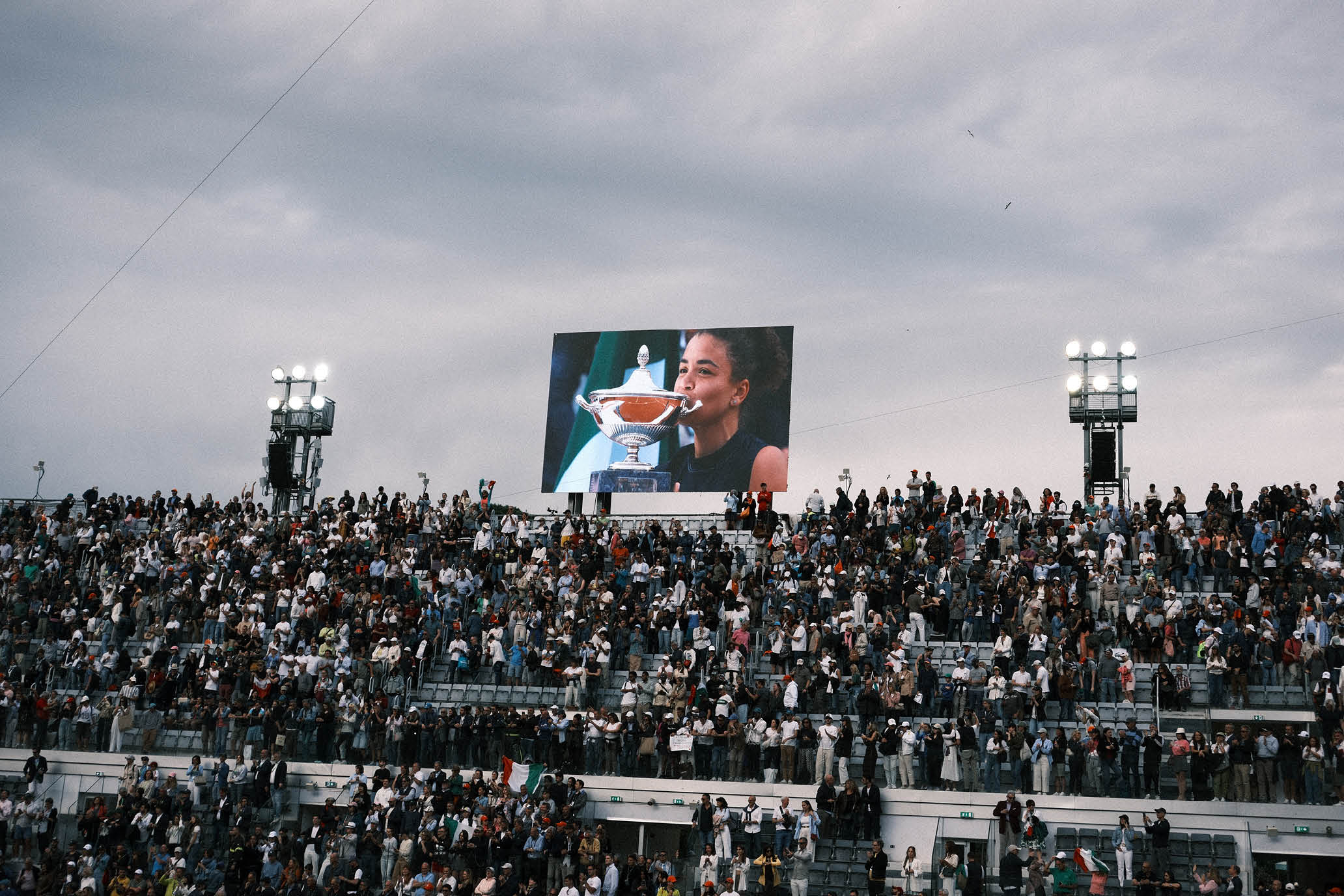
Jasmine Paolini's victory in Rome was a moment. // David Bartholow
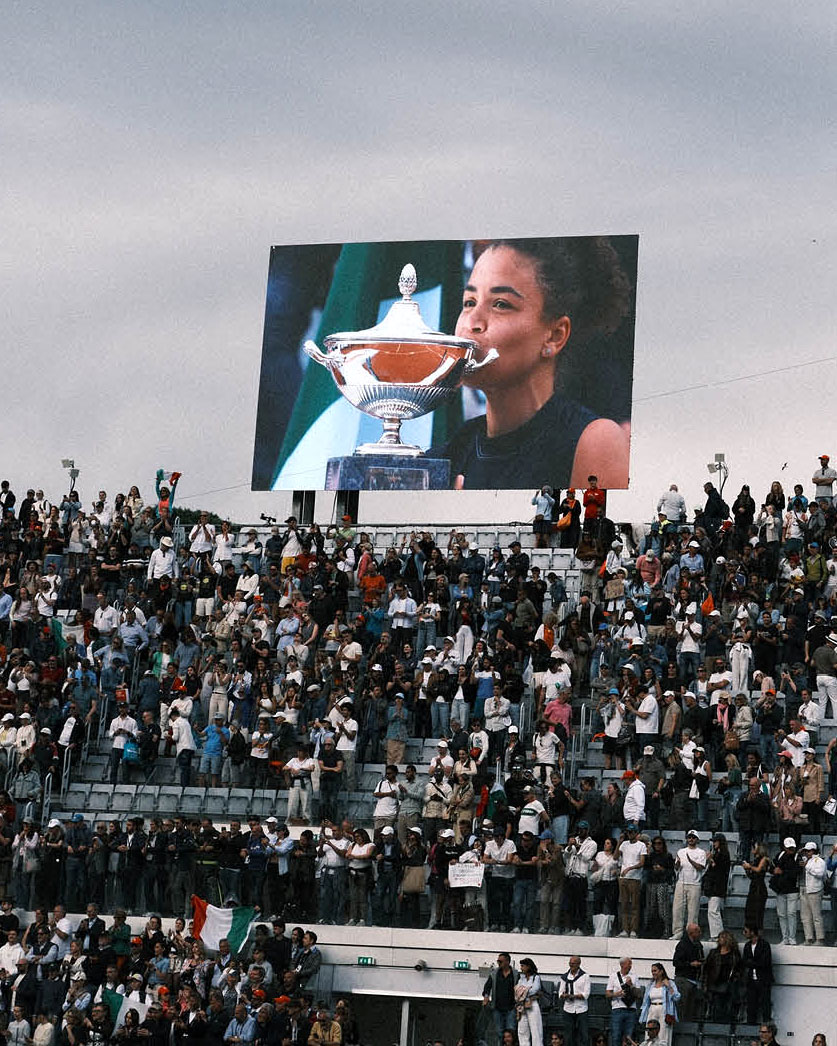
Jasmine Paolini celebrates victory in Rome. // David Bartholow
Jasmine Paolini’s 2024 season was so surreal that I felt attuned to its scarcity even while it was still playing out. I was distracted by my real-time awareness that none of this could ever be replicated. How could it be? What is a tennis observer to make of a player, who had never advanced past the second round of a Slam, suddenly catapulting herself into the finals of Roland-Garros and Wimbledon? Here was a 5-foot-4 marvel, ricocheting all over the court like a Super Ball, playing with contagious joy. Got to enjoy this while it lasts.
Because there was only a single-season sample of her being one of the best players in the world, and there was a much larger sample of her being ranked far outside the top 50. Few players have ever turned their careers around like that at such an advanced age and had it stick. And as heartily as I throw my support behind all vertically challenged players on the pro tours, I understand the reality: Margins are slim. They have to rely on athleticism to compensate for a lack of easy power, and when that fails them, even by a half step, their game can fall off a cliff, à la Diego Schwartzman. So I had no idea how she would fare in 2025, the last season of her 20s.
The start was not auspicious. She entered the year at No. 4 in the world and, for the first two months of the season, did not beat any opponents ranked higher than No. 70. Paolini finally warmed up in Miami, making it to the semifinal, where she was promptly smashed by the eventual champ and season-long tyrant, Aryna Sabalenka.
It wasn’t until mid-April that Paolini beat a fellow top 10 player. That was Coco Gauff, on the clay at Stuttgart. That was the first match of 2025 to validate Paolini’s lofty ranking, and even though it delivered her into another semifinal defeat at the hands of Aryna Sabalenka, beating Gauff would be a good prophecy for what was to come.
In the heat of the clay season, she went back home to Italy. Rome—like so many other stops on tour—was a tournament where she’d never seen much success. She hadn’t yet cleared the second round. This year, as the No. 5 player in the world, she was laboring under expectations for the first time. And the atmosphere was rare. Italy was relishing its recent rise to tennis supremacy, world No. 1 Jannik Sinner was making his debut after suspension, and the crowds sounded full of nearly religious fervor. They were rewarded for their faith when both Sinner and Paolini blazed to the finals, raising the possibility of an Italian sweep of both singles trophies.
Though Sinner fell, Paolini finished the job. Faced with a challenging slate of opponents, she played spectacular tennis throughout the tournament—an addictively watchable blend of speed, power, variety, hands. Her opponent in the final, Coco Gauff, was swept away like all the rest. Paolini clinched the title in 89 minutes and danced around the court in one of the emotional apexes of the entire tennis season. She was the first Italian woman to win the Rome title in 40 years. The crowd regaled her with song. If that weren’t enough, the next day she picked up the doubles title with her friend and countrywoman Sara Errani. The new queen of Italian tennis probably could’ve retired from the sport that day and been content.
But the season went on; it always does. Roland-Garros and Wimbledon, sites of past glory, brought only disappointment in 2025: a squandered triple match point in the fourth round, and a second-round exit, respectively. But Paolini bounced back with another run to a 1000 final, this time in Cincinnati, along the way beating Coco Gauff for the third straight time. Her opponent in the final was a white-hot, post-Wimbledon Iga Swiatek, who dealt Paolini the sixth loss of their six meetings. But after a middling US Open, and after leading Italy to a second straight Billie Jean King Cup, Paolini got another look at Swiatek in Wuhan. This time it was one of the shock results of the entire season: 6–1, 6–2, a flawless Paolini victory, and her last big splash in 2025.
On court, Paolini found consistency. In the player’s box, there was some instability. She moved on from her coach Renzo Furlan, whom she had been working with for a decade. She then tried Marc Lopez, but that lasted for only three months, and then started working on a provisional basis with rookie coach Federico Gaio. I would expect to see more changes there in the coming weeks. But the tennis part seems to have been all sorted out. For all the uncertainty heading into the season, 2025 was a remarkably normal year. There were no Slam finals this time. The spikiness smoothed out, and she eased into life as a top 10 player, stacking solid wins week after week, claiming some nice trophies, ending as world No. 8. It was, after all, a sneakily wonderful season, one that seemed designed to assure everyone that 2024 was no mirage.

PURE, ORIGINAL TENNIS — SIGN UP!
The Arms Race Continues
The Arms Race Continues
The Arms Race Continues
Carlos Alcaraz and Jannik Sinner are adding to their arsenals.
Carlos Alcaraz and Jannik Sinner are adding to their arsenals.
By Owen Lewis
November 20, 2025

Sincaraz during their clash at the ATP Tour Finals. // Getty

Sincaraz during their clash at the ATP Tour Finals. // Getty
I knew the tennis that defined the legendary Big Four era was dead when Jannik Sinner saved set point against Carlos Alcaraz with a 117 mph second serve. It was at 5–6 in the first set of the championship match at the ATP Finals. Sinner had just watched Alcaraz thrash a forehand winner past him, feather a drop shot beyond him, and flail an outrageous reflex volley right in front of his eyes. Staring down set point after that devastating trio of hot shots, Sinner missed his first serve. Rather than roll in the second delivery, Sinner pasted it into Alcaraz’s backhand and was rewarded with a free point. Sinner went on to win the match 7–6 (4), 7–5, owing significantly to that moment of bravery in crisis.
Afterward, Sinner offered an explanation for his audacity: “I would rather lose that point than have him win it.”
Talk about seizing your fate. Sinner wanted to reduce a game played by two people to a game against himself, even if it meant burial via his own shovel. It’s also the greatest possible compliment to Alcaraz’s skill set: He is so dangerous that under ideal circumstances, he cannot be permitted to hit a single shot with his feet set. But more than anything else, Sinner’s ethos represented a complete departure of the mindset that governed the Big Four era. In his autobiography Rafa, Rafael Nadal assured his uncle Toni during a dire passage of the 2008 Wimbledon final that while Roger Federer might win the match, Nadal would not lose it. Before the match, he notes that he shouldn’t jump at a 70 percent chance to hit a winner when an 85 percent chance might present itself a few shots later in the rally. Alcaraz and Sinner would have laughed.
Nadal hit his share of awesome winners on big points. But how he really made his money (before becoming Saudi Arabia’s tennis ambassador) was by refusing to miss on a big point. If his opponent baited him into hitting the best shot of the day, Rafa was happy to thwack it. But more often, he’d simply hold the line until his opponent inevitably faltered, not pressing into the dangerous territory of hot shots unless someone forced him to. Even Novak Djokovic, the lone man who can claim to be more clutch than Nadal, could be guilty of passivity in his prime every once in a while. Djokovic shrunk the court down to its outer reaches in a phenomenally successful wager that his opponent couldn’t strike the outside of the lines consistently over the course of three hours. Those who could, though, like Dominic Thiem in a couple deciding-set tiebreaks, or Stan Wawrinka in a couple major finals, occasionally became the defining force in their matches. If you happened to get hot, Djokovic sometimes gave you the opportunity to beat him. Roger Federer was more aggressive than both Djokovic and Nadal, but his accuracy waned when his matches against them tightened and they elicited his errors over and over. And Andy Murray could be infuriatingly passive at times, more so than any of the others.
In his late career, Djokovic seemed to decide that he’d rather lose a point by his own hand than let his opponent bang a return winner, or run him around the court. Thus the huge second serve began to feature in his game, the bailout drop shot, the fuck-it running forehand winner. Djokovic missed these shots at times, but in trying them so often, he denied his opponents momentum, rhythm, or even the satisfaction of agency in their own success. Even when he walked to the net defeated, there was often a sense that he’d chosen to be there.
The Sincaraz Empire (2024–????) has preserved this raw aggression and left most of the other Big Four relics behind. There is no room for passivity, for trying to make the opponent miss, for hesitation. They debuted this futuristic brand a few years ago, but it’s since evolved further and solidified into a kind of law. Sunday’s Alcaraz–Sinner final may have been the most straightforwardly offensive matchup between top players I’ve ever seen. Though both are adept defenders, they often let loose a counterpunching winner before they’d even had the chance to spend much time on the run—as if scrambling for more than a second at a time was a death sentence. Long rallies felt like a happy accident of their sublime foot speed rather than a conscious decision to trade before striking. Sinner pointed to his ear triumphantly after winning the lengthiest exchange in the second set, and it struck me that in a vintage Djokovic–Nadal match, the 24-shot collaboration would have essentially qualified as an average point. Alcaraz’s love for drop shots is well established, but the rallies operated at such a pace that he simply didn’t have time or space to hit more than one or two good ones. The matches are now largely a hitting contest: The player who hits their biggest forehand onto the tiniest target wins.
“Aces are like rain. You accept them and move on,” Nadal wrote in Rafa. Try telling that to Alcaraz, who reacts to aces by frustratedly emphasizing their tenuous path between the lines with thumb and forefinger, and stared in disbelief at the radar gun after many of Sinner’s best serves on Sunday. Carlos returned the favor, though. Early in the second set, he hit consecutive forehand winners down the line—one, two, three—each blast harder than the last. Both players can hit any spot on the court, from any spot on the court, and the opponent having that power is simply too dangerous. Every point must instead be ruthlessly ended as soon as possible.
That echo of pure proaction, more than anything else, was my lingering memory from Sincaraz XVI. (Despite a perfectly even split in the points spread, 1,651 apiece, Alcaraz still leads the head-to-head 10–6; had Sinner converted match points in their matches at the 2022 US Open and Roland-Garros final this year, we could be at 8–8.) It’s not always the most intellectually stimulating tennis to watch—at times I catch myself craving angled shots that tease the sidelines of the court alongside flat missiles through its back, or the myriad tactics at play in a lung-busting Djokovic–Nadal 54-shot rally. But it’s certainly gripping even at its worst, and incandescent at its best.
It’s hard to draw too many conclusions from the match itself. Jannik came up with a pair of gorgeous lobs in the first-set tiebreak, impressive not only for the execution but that they were hit at all—touch shots are not usually Sinner’s go-to even in the least consequential points, much less at crunch time against the one player on tour who can rattle his equilibrium. Those shots were indicative of both the increased unpredictability Sinner promised after the US Open and an ability to bounce back without fear from oh-so-many heartbreaks against Alcaraz. He did do it against a somewhat compromised version, though: Alcaraz pulled up with a hamstring edema about 45 minutes in, after which his typically violent movement around the court went dormant. He maxed out his aggression instead, resulting in a few unanswerable winners but plenty more questionable approach shots and volleys that Sinner duly punished. It seemed to me that Alcaraz’s condition incentivized him to rush into suicidal net rushes at times, and I wonder if he’ll allow Sinner to be in position to hit those lobs next time around. Alcaraz pulled out of the Davis Cup rather than risk a hamstring tear, which furthers the impression that Sinner ending the match in two sets was probably the best thing for both players.
Where this hyperaggressive brand of tennis goes from here, I have no idea. Enjoy it while you can—their last two matches have featured incredibly dominant first-serve performances, cutting down on the number of breaks of serve and baseline exchanges in general. If their serves continue to improve at this frightening rate, there’s one clear way to foster more of the valuable, resonant rallies in their rivalry: make them start every point with a second serve.

PURE, ORIGINAL TENNIS — SIGN UP!
Elena Rybakina's Fraught Season
Out Like a Lion
Out Like a Lion
After a chaotic start to the season, Elena Rybakina finishes strong.
After a chaotic start to the season, Elena Rybakina finishes strong.
By Giri Nathan
November 14, 2025
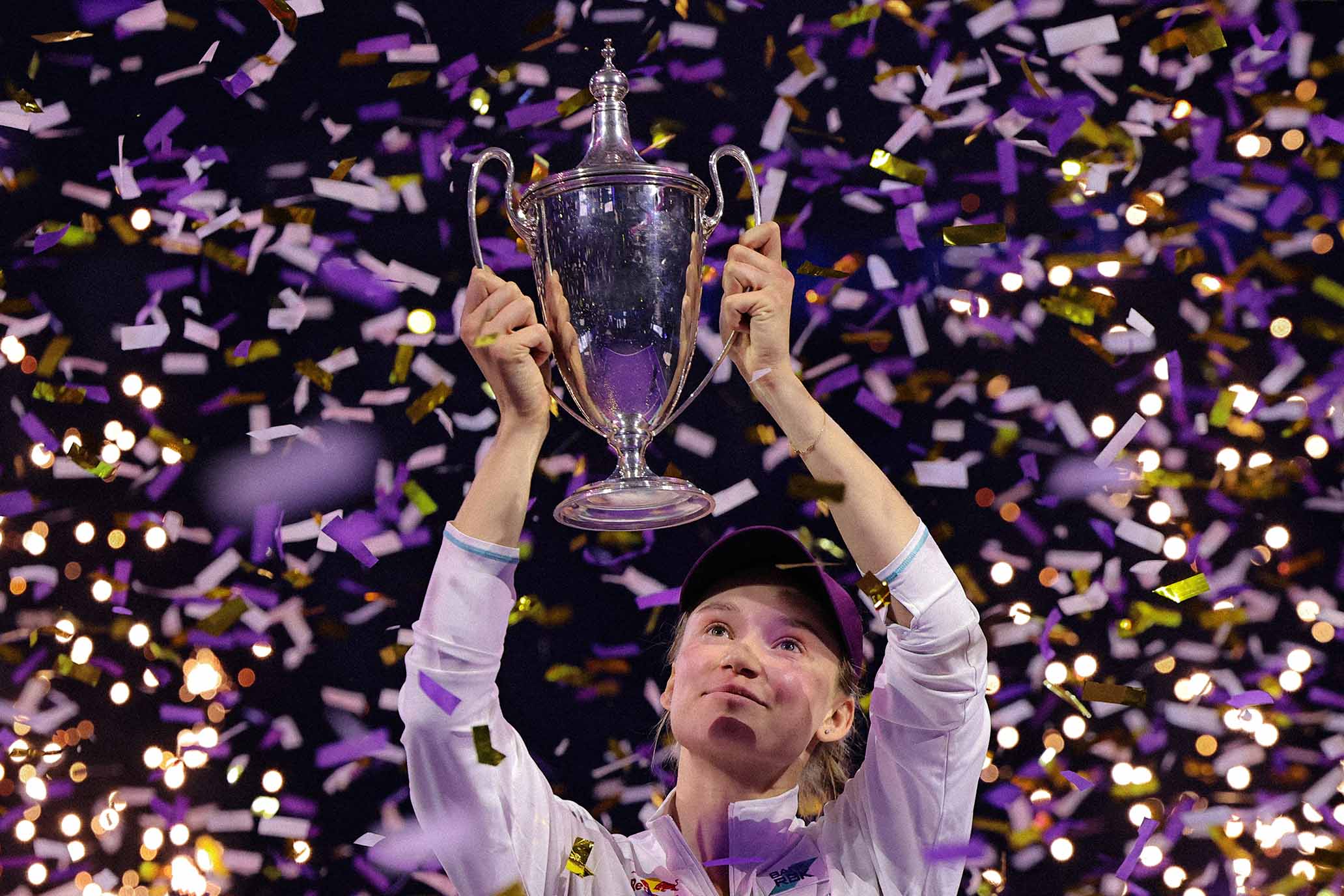
Elena Rybakina lifts the trophy after winning the WTA Finals in Riyadh last week. // Getty

Elena Rybakina lifts the trophy after winning the WTA Finals in Riyadh last week. // Getty
At her peak there’s no keeping up with Elena Rybakina. Sometimes I look at her play and think that a tennis player could not possibly be any better. She is also prone to drift from relevance for weeks on end. At the outset of the year I anticipated that we’d see her peak again in 2025. That’s because at the outset of the year, there was one tremendous reason for optimism—but it didn’t survive even a month.
In late 2024, Rybakina announced the most intriguing coaching hire I’d heard in years: Goran Ivanisevic. I like him because he’s a wild talker, and because his wild-card run to the Wimbledon title in 2001 is my first-ever tennis memory, but subjectivity aside, Ivanisevic was clearly one of the most accomplished active coaches. He’d helped Marin Cilic break through the era of Big Three hegemony and win the 2014 US Open. He’d shepherded Novak Djokovic through his late period, which saw him hone his serve into a career-elongating weapon and win nine Slams over six years. Rybakina would be Ivanisevic’s first-ever client on the WTA side. The 2022 Wimbledon champ had yet to collect another major, but she was arguably the greatest server of her generation, and there was still plenty of upside that a savvy coach might uncover.
And then, after a fourth-round Australian Open loss to eventual champ Madison Keys, Rybakina split with her new coach. Their partnership lasted just two tournaments. The reason for the split was never really in question. At the start of January, Rybakina announced that she had resumed working with her longtime coach Stefano Vukov, who was then the subject of an ongoing WTA investigation due to his behavior toward her. A few weeks after she rehired him, Vukov was sent a letter from WTA CEO Portia Archer. The letter and its contents, which were first reported by The Athletic, acknowledged evidence of a romantic relationship between Rybakina and Vukov. It also described it as a “toxic relationship,” accused him of “abuse of authority” as well as “verbal and physical abuse,” and suspended him from the tour for a year, starting at the end of January. (Vukov has repeatedly denied these allegations.)
The promising Ivanisevic era was over as soon as it had started. Rybakina had gone back to an old coach, newly barred from tournaments and practice courts. Ivanisevic, for his part, was “blindsided” by Vukov’s return to the team, according to The Athletic. He would later describe Rybakina’s situation as “sad” and “strange” in an interview with the former soccer player Slaven Bilic: “Unfortunately, some things happened off the court that I couldn’t control, and I didn’t want to be a part of that and part of that story.” For at least some of the tennis world, one undercurrent of the enthusiasm about Ivanisevic was relief that she’d moved on from Vukov. Apparently that was not the case after all.
She proceeded with her tour schedule while employing a coach who could not actually set foot in tournaments. What was happening on court during all this? One Dubai semifinal and one Strasbourg title notwithstanding, the first half of Rybakina’s 2025 season was unremarkable. For the first time in two years, she slipped out of the top 10. She lost winnable matches to her chief rivals, Iga Swiatek (7–5 in the third at Roland-Garros) and Aryna Sabalenka (squandered quadruple match point in Berlin). Not long ago those players appeared to be coalescing into a Big Three on the WTA. That future looked less secure, as Sabalenka pulled away from the pack.
Off the court, Vukov appealed his suspension in June and soon entered into private arbitration with the tour. In August, the suspension was lifted and he returned to his seat in the player’s box. Around that time, Rybakina’s results turned around. She made consecutive semifinals in Washington, Montreal, and Cincinnati; she beat a few top 10 opponents. And she managed to salvage her season just in time, racking up the wins in the Asian swing and lifting a 500 title in Ningbo that secured the last slot at the WTA Finals in Riyadh. Despite having languished for much of this season, she earned a chance to reassert herself among the best players on tour.
And in the Saudi capital, at the end of this murky year, she peaked, beating four of the top five players in the world, including Sabalenka in a blistering final. At its best Rybakina’s tennis is powerful, lucid, and economical, as I wrote a few days ago and still agree with. She controls points start to finish, doesn’t run more than she has to, and looks luxuriously unhurried.
Rybakina ended the season with 516 aces, the first woman to break the 500 mark since Karolina Pliskova in 2016. For going undefeated at the WTA Finals, Rybakina was awarded the largest prize in the history of the professional tennis tours, $5.2 million. After the match there was supposed to be a photo with the WTA CEO and the two finalists. Rybakina snubbed her and stood off to the side while it was taken. The implication was obvious: She was unhappy about how the tour had dealt with her coach, and had no interest in posing with its top executive. In the post-match press conference, after some prodding from reporters, she said there had been no reconciliation with the WTA after the investigation. Rybakina absolutely dominated the year-end event of a tour that just sanctioned and then unsanctioned the coach she continues to employ. It’s an uneasy situation, which raises questions about individual agency and institutional responsibility, and admits no satisfying answers. And the better she plays, the starker those questions will be.

PURE, ORIGINAL TENNIS — SIGN UP!
What's Broken About the ATP Tour Finals?
Out Like a Lamb
Out Like a Lamb
Often, at the Tour Finals, the ATP season just seems to fizzle out.
Often, with the Tour Finals, the ATP season just seems to fizzle out.
By Owen Lewis
November 13, 2025

Novak Djokovic holds up the ATP Tour Finals in 2014 after Roger Federer withdrew before a single ball was struck. // Getty

Novak Djokovic holds up the ATP Tour Finals in 2014 after Roger Federer withdrew before a single ball was struck. // Getty
Day 3 of the ATP Finals this year couldn’t have been better. Taylor Fritz blitzed Carlos Alcaraz with arguably his most accurately aggressive tennis to date, only to choose the wrong side on a few putaways and fall inches short in an epic. Lorenzo Musetti and Alex de Minaur—underpowered players by comparison, whose matchup a friend of mine recently suggested would be a more apt for ATP 250 final—made the fast hard court look like clay in the evening. Rallies had to be won several times over. Just as de Minaur had twisted the match in his favor, he made a mess of a backhand volley and enabled Musetti to ride the Italian crowd’s rapturous applause and some sensational shotmaking to victory. Then de Minaur himself scored a cathartic win over Fritz two days later, his rubbery relief afterward so evident it was as if he’d freed himself from a lifelong burden. As Zendaya might say: good fucking tennis.
It also felt startling because the ATP Finals do not consistently produce good fucking tennis. On paper, the tournament looks like it can’t miss. With eight players, the best in the world, it’s all meat and no fat. The round-robin format ensures you get to see each player at least three times. A quick indoor hard court protects the participants’ dilapidated bodies from caving in entirely. Except the ATP Finals do miss, a lot. Can you remember any particularly interesting matches from the 2018 tournament? 2021? What about 2022, outside Daniil Medvedev’s tragicomic week, in which he served for two of his three round-robin matches, reached deciding-set tiebreaks in all of them, and came up winless? Or 2024, in which Jannik Sinner hardly left first gear? I’m seriously asking, because I watched most of these editions, yet memories of genuine entertainment escape me like dreams, or my sanity after 10 months under the Trump administration. After Sinner polished off Felix Auger-Aliassime and his sore calf during this year’s edition, social media freelancer Bastien Fachan noted that 18 of the previous 21 matches at the ATP Finals had ended in straight sets.
I have some thoughts on the origins of this epidemic of boredom at the ATP Finals, though I’m not sure how treatable it is. The indoor hard court may be the only humane choice at the very end of an unfailingly attritional season, but it often reduces typically intriguing matchups to a serving contest. They also don’t closely simulate the conditions at any of the four majors. The Finals’ placement in the calendar ensures the players compete under the full weight of said attritional season. Longtime tennis.com writer Steve Tignor suggested to me on Bluesky that the round-robin format robs the event of other tournaments’ ability to steadily build momentum from one round to the next. Then there’s the flagging depth on the ATP Tour: Carlos Alcaraz and Sinner have left their peers in the dust, to the extent that anybody else posing a satisfying challenge is more happy surprise than reasonable expectation. (Last week’s WTA Finals were very entertaining mostly thanks to Amanda Anisimova and Jessica Pegula, seeded fourth and fifth, respectively, featuring in multiple epics.)
Even in the years of the vaunted Big Four, clashes at the ATP Finals tended to underwhelm. Nadal laid down for Djokovic in the 2013 final, who did the same for Andy Murray in the championship match three years later. The anticipated 2014 final between Federer and Djokovic didn’t happen at all because Federer’s back wouldn’t cooperate. (Djokovic is bafflingly credited for a win over Federer on the ATP’s official page for the rivalry, despite not playing a single point that day.) Not that there haven’t been bangers between those two, like the 2012 final, or wholly interesting events some years. Dominic Thiem became the first player to take the racquet out of Djokovic and Nadal’s hands in vital tiebreaks with pure aggression at the 2019 and 2020 editions, and was so compelling in his bravery that he felt like the main character of both events despite not winning either of them.
But such theater at the ATP Finals is far less frequent than we’d expect or like. Nadal, tennis’ greatest warrior, never really showed up there as more than a diminished version of himself, beaten down by his efforts in the first 10 months of the season. Haters call the event a glorified exhibition. Though 1,500 ranking points are on offer, short only of a major, I see what they mean. You can theoretically lose twice and win this tournament; you can advance out of a group while somebody who beat you head-to-head stays behind; a given matchup can occur twice in the same week. It’s goofy, and different enough from all the other tournaments that it can feel overvalued.
In a perfect world, I’d put the ATP Finals on clay—it’s softer on the joints and more likely to draw spectacular rallies out of the participants—or a slower hard court. They’d be much earlier in the season (as long as the qualifying period lasts one year, it can start and end at any time) or modified to a standard, single-elimination tournament to reduce the workload on the players. For some novelty, maybe the eighth spot could go to an intriguing wild card instead of the numerical No. 8, who is generally unlikely to make much of an impact.
As things are, the 2025 tournament has indeed been excellent and might provide an Alcaraz-Sinner encore in the elimination rounds. Demon’s week, which began in misery, will now continue into the semifinals. It’s easy to imagine an even better ATP Finals in 2026—Jack Draper and Joao Fonseca making impactful debuts, maybe, and the return of the stars in this year’s field. When it comes to this tournament, just don’t count on practice looking as pretty as theory.

PURE, ORIGINAL TENNIS — SIGN UP!
Coco Gauff is Living on the Edge
Living on the Edge
Living on the Edge
Coco Gauff's roller coaster season.
Coco Gauff's roller coaster season.
By Carole Bouchard
November 7, 2025
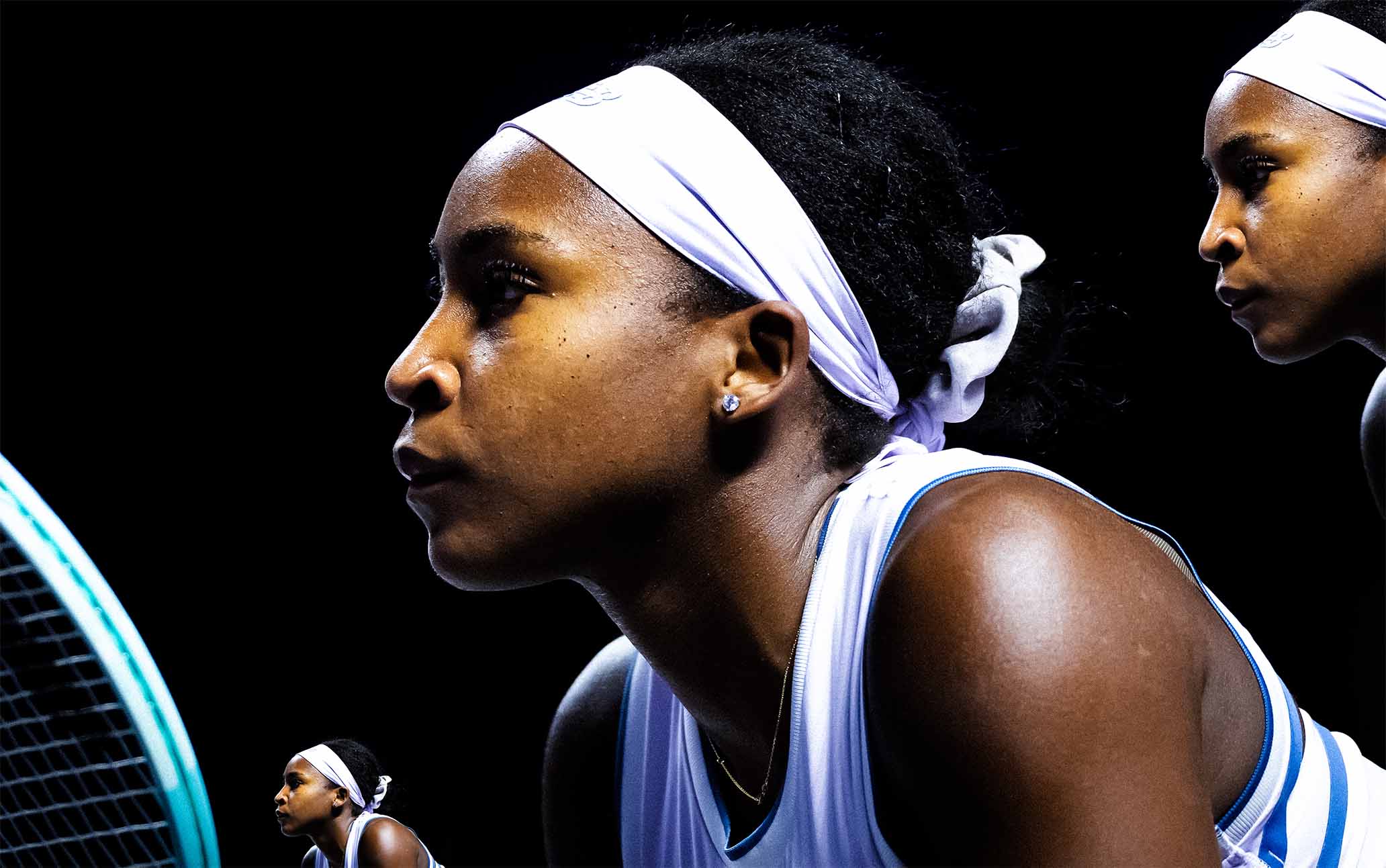
Coco Gauff in Riyadh this week. // Getty

Coco Gauff in Riyadh this week. // Getty
Coco Gauff lost her WTA Finals title, ousted after losing against Jessica Pegula to start and then to Aryna Sabalenka. Here ends her very successful, yet tumultuous, season.
Gauff should be heading into this short offseason with the feeling of a job well done, and yet something might be nagging at her. After all, when you win a Grand Slam title and a WTA 1000, and make two WTA 1000 finals in a year, and won’t be ranked lower than No. 4 in the world, it has to be a fantastic year. It is. However, when Gauff lost that last group stage match in Riyadh, and also her chance to retain her crown here, it left a bad odor hovering over her 2025 season.
The disappointing result illustrates that Gauff’s high-level puzzle doesn’t seem any closer to being solved than it was last year. She hit 17 double faults against Pegula in her first match, despite having started to work with Gavin MacMillan this summer and the confidence boost of beating Pegula in the Wuhan final last month. “I just try to do what is comfortable in the match,” she explained in Riyadh. “But it’s difficult. Some things we practice get hard to translate into the match.”
Gauff reduced her double faults to just six against Sabalenka but admitted she had to take something off her serve to do so. “I would like to serve faster, but after my first match, I had to take some pace off and just focus on hitting it high, heavy kicks in the court. But I would like to mix in more flat and mix in more slider wides. Off the ground, for sure, are things that I feel like I can work on and get better at. But with the serve, if it was a good step, that type of serving is what I can do on an off day, but not how I would like to be on an A-plus day.”
The serve has been Gauff’s nemesis for two years now, and it must be exhausting mentally for such an accomplished player. After all, that shot came to sink her entire game so many times this year, giving a feeling of a season of struggle, the nadir of which was during Sunshine Double. If you take her fantastic clay season out, the face of her year flips. On Thursday, against Sabalenka, we saw the best Gauff could be—and then everything that comes in the way. She was the best player for nearly the whole first set, up 5–3 after also having three double break points (Sabalenka hit three aces). Yet, facing her opponent’s power and pace, her momentum was slowly but surely erased. That revenge of the Roland-Garros final fell short because of how strong Sabalenka has gotten and how Gauff is still battling the same hurdles.
Gauff finished the year doing what she did better than almost anyone else on tour this year: showing that even without her A game, she could win big. After all, at 5–3 up against Sabalenka, she was nearly a set away from qualifying. “That’s been the story of my season and of the last couple of years. I played some really great matches, and in others I had to scrape through. My game is getting better, so I’m just hoping I can mesh it all together. It gives me a lot of hope for the future. It’s been a lot of ups and downs but overall a positive season with a lot to be proud of and many areas where I wish I could have done better. It’s part of life. Now I have a lot of time to work on my serve and hopefully be ready for Australia. I’m really excited just to get back and get better.”
The question at this level is always how the player can hold it together long enough to fix what needs fixing. At some point, it will become unbearable for Gauff to be undone every other week by either that serve or that forehand. She admitted this year that she had a clear image of what her game should look like and would refuse to play in a way she doesn’t like. Scraping her way through wins and hitting double-digit double faults isn’t the way she loves her tennis. “I feel like I’m a step in the right direction, and I just want everything to mesh at one point so I can feel completely comfortable on the court.” The world No. 3 should absolutely feel comfy out there, and it’s a red flag that she still does not.
“Today I didn’t show up as I should have,” she said after the Pegula loss. But how many times this year did she leave the court with that feeling?
Confidence that you can deliver in the big moments is everything for a top player. So this winter seems crucial for Coco Gauff—and MacMillan—to get her game together. The doubts and imbalance created by serve and forehand issues need to go now, as she’s still young enough and motivated enough to hit new heights. It’s time to take that burden off her game so she and we can all finally see who Gauff really is as a player. As Aryna Sabalenka joins Iga Swiatek on the list of players regularly blocking Gauff’s way to her dream of tennis world domination, they’re now joined by her compatriot Amanda Anisimova, who is threatening to take her spot as the U.S. No. 1. It’s been a great season for Gauff and, at the same time, one coming with a strong warning.

PURE, ORIGINAL TENNIS — SIGN UP!
Alex de Minaur is Doing His Best
Demon the Hunter
Demon the Hunter
Alex de Minaur can't beat the big dogs—but it's fun to watch him try.
Alex de Minaur can't beat the big dogs—but it's fun to watch him try.
By Owen Lewis
November 4, 2025

Alex de Minaur on the hunt in Beijing. // Getty
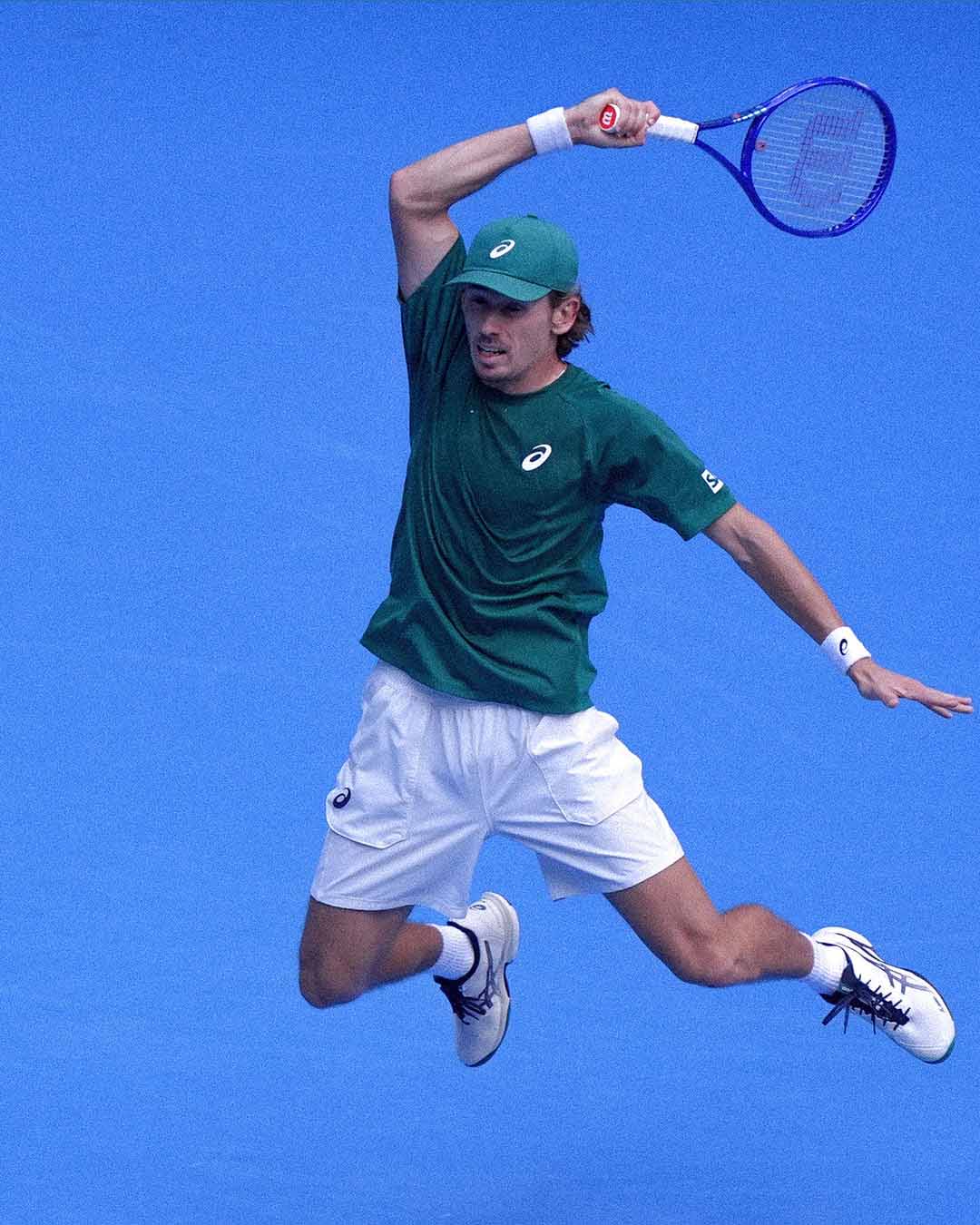
Alex de Minaur on the hunt in Beijing. // Getty
Alex de Minaur is listed at six-foot-even on the ATP’s website, but it sometimes feels like he is 12 inches shorter. His slight frame prevents him from easily generating the napalm-grade power you need to have to challenge for a major title these days. When he does blast a ball, he hurls his entire body into the air, and you can feel the effort through the screen. Sometimes I expect him to leave his shoes behind. Even when he exhibits his most supernatural skill—his speed—it’s used for desperate defense most of the time, in reaction to the opponent’s offensive abilities. The man known as “Demon” has a scrappier, less deceptive style than the tag would suggest. Without a forehand that can outpace speeding cars on the highway, he relies on exquisite timing, sneaking to the net and slicing sharp, angled volleys there and flitting over the court like the disk of light the sun sends bouncing off a screen and flying around a room. He is quiet, plays beneath a cap, and has a mustache as wispy as his build. He should play the industrious no-hoper in the next sports movie (Challengers 2: Electric Boogaloo?). Timothée Chalamet should star in his biopic. But for all the underdog spirit de Minaur projects, this underpowered roadrunning Australian has risen to seventh in the world and will participate in the year-end finals for a second straight year. His career has outpaced the notions we measure him against.
Not that he isn’t still helpless against certain foes. Recall your most humiliating mercy rule loss from Little League, then imagine it happening in front of a few tens of thousands of people rooting for your team. You’d come up with something vaguely as traumatic as the 2025 Australian Open quarterfinal loss to Jannik Sinner, the nadir (so far) of what’s currently the goriest recurring matchup in tennis. Sinner won 6–3, 6–2, 6–1, though the score line felt generous to de Minaur. My clearest memory from that match is de Minaur putting all his weight into an excellent backhand down the line that achieved the near-insurmountable task of moving Sinner off his favored spot on the baseline. The problem was that Sinner got to the ball and immediately passed de Minaur with his forehand, and the other problem was that none of the other points that day were remotely as exciting. If they’d had to play one more set I think it would have revealed some fundamental, unfixable wound in the fabric of the sport. David and Goliath might come to mind if David had less power on his slingshot and Goliath was too smart to get hit smack in the forehead and too tough to fall over even if he did.
That arguably wasn’t even the most lopsided defeat de Minaur had choked down in Melbourne, an honor that goes to his annihilation via Novak Djokovic two years earlier. Djokovic had hurt his hamstring before the tournament and looked in dire straits at times in the previous round against Grigor Dimitrov. After winning an athletic, strenuous rally to win the first set against Grigor, Djokovic collapsed to the ground—which now happens at practically every tournament, but felt like a striking show of mortality back then—to the point that I seriously believed, for a moment, he was about to retire from the match. Instead, he didn’t lose another set all tournament. The three he won against de Minaur, 6–2, 6–1, 6–2, were played with such haughty mastery that there might as well not have been another player on the court.
“I thought he was moving pretty well,” de Minaur said after the match. “Either I’m not a good enough tennis player to expose [the hamstring issue], or…it looked good to me. He was just too good in all aspects.” To me, it was clearly the former: No matter how hard he swung, de Minaur couldn’t produce a shot of enough heft to make Djokovic move with any violence. At times he’d rip a forehand into the corner, and Djokovic wouldn’t even have to slide to get there. Novak, meanwhile, dismissed shots for winners at will, from any part of the court. I spent some time after that match wondering how de Minaur could ever reassemble the self-esteem that Djokovic must have blown into a million pieces.
Yet somehow, de Minaur has played Djokovic competitively every time since that 2023 indignity. Sure, Djokovic’s decline finally kicking in helps, but it’s remarkable nonetheless—I’d have intentionally contracted the most convenient communicable disease to avoid rematches. In 2024, Alex beat Djokovic handily at the United Cup and lost in a tight two at Monte-Carlo. Most recently, in July, de Minaur thrashed Djokovic in the first set of their Wimbledon fourth-round and, though he lost the next three, had golden opportunities to win the fourth. He lost, but he pushed Djokovic hard enough to lay bare the aging lion’s vulnerabilities.
So maybe it shouldn’t have been a surprise that de Minaur has played Sinner closer since his exsanguination in January. But watching him struggle just to win points against Sinner in Melbourne, I never thought I’d see the day. Sinner does everything better than de Minaur, including defense: He may not be quite as quick of foot, but he has a more muscular style that allows him to better block back incoming missiles once he reaches them.
In Beijing in September, though, de Minaur showed out. He took a set off Sinner, just his second in their entire head-to-head, and he had break points in both the sets he lost. I watched the full match last week, and I’m still floored at how well de Minaur played to win that set. At break point down at 3–3, de Minaur won the most incredible rally—after Sinner survived an early overhead smash, the men traded baseline blasts, all taken on the rise and hit squarely with the sweet small middle of their string beds, for what felt like forever. This type of rally is unrecognizable from the points played even five years ago and is a plain different sport from the serve-and-volley days. Finally, de Minaur timed a crosscourt forehand exquisitely just as Sinner started to slow down, which afforded him a put-away that he nailed. That de Minaur won this type of point against a player who does everything better than him struck me as more impressive, relative to each of their abilities, than Sinner eventually winning the entire tournament.
In the quarterfinals of last week’s Paris Masters, de Minaur ran up against his antithesis, the bold, brash, tempestuous, powerful, inconsistent Alexander Bublik—strike that, let’s use his nickname, Sascha, lest he be confused with de Minaur in any way at all. On set point for de Minaur in the first set, Bublik hit a solid backhand down the line, and de Minaur redirected it violently crosscourt with a brilliant flick. It was the type of magical, unteachable shot that I thought belonged solely to those with greater shotmaking instincts. He served exceptionally throughout the match, too, racking up 12 aces and dependable win percentages on both first and second serve. Then he double-faulted the vital break away at 5–5 in the third set, and Bublik served out the match. It seems he can’t yet sustain that perilously high level yet.
Maybe de Minaur’s destiny is not that of David but Fingolfin, the Tolkien character in The Silmarillion who pecked, poked, and punctured the towering evil god Morgoth in single combat before finally dying, and even when being crushed to death still made sure his sword went through Morgoth’s foot. Let’s not forget that Fingolfin was a king himself. Alex followed up his brave stand in Beijing by losing to Sinner in straights in Vienna, though he still broke serve twice, which amounts to worthy resistance given that Sinner dropped serve three times across five matches in his title run in Paris. I still don’t think de Minaur can beat Sinner, but watching him try is becoming kind of fun.
As the only tournament all year in which a majority of the participants are better players than de Minaur, the upcoming World Tour Finals promise to be cruel. Last year, he lost six of the seven sets he played. Logic suggests de Minaur will lose heavily, maybe more than once. But if he remains this utterly committed to resistance, he might be able to shatter that narrative as well.

